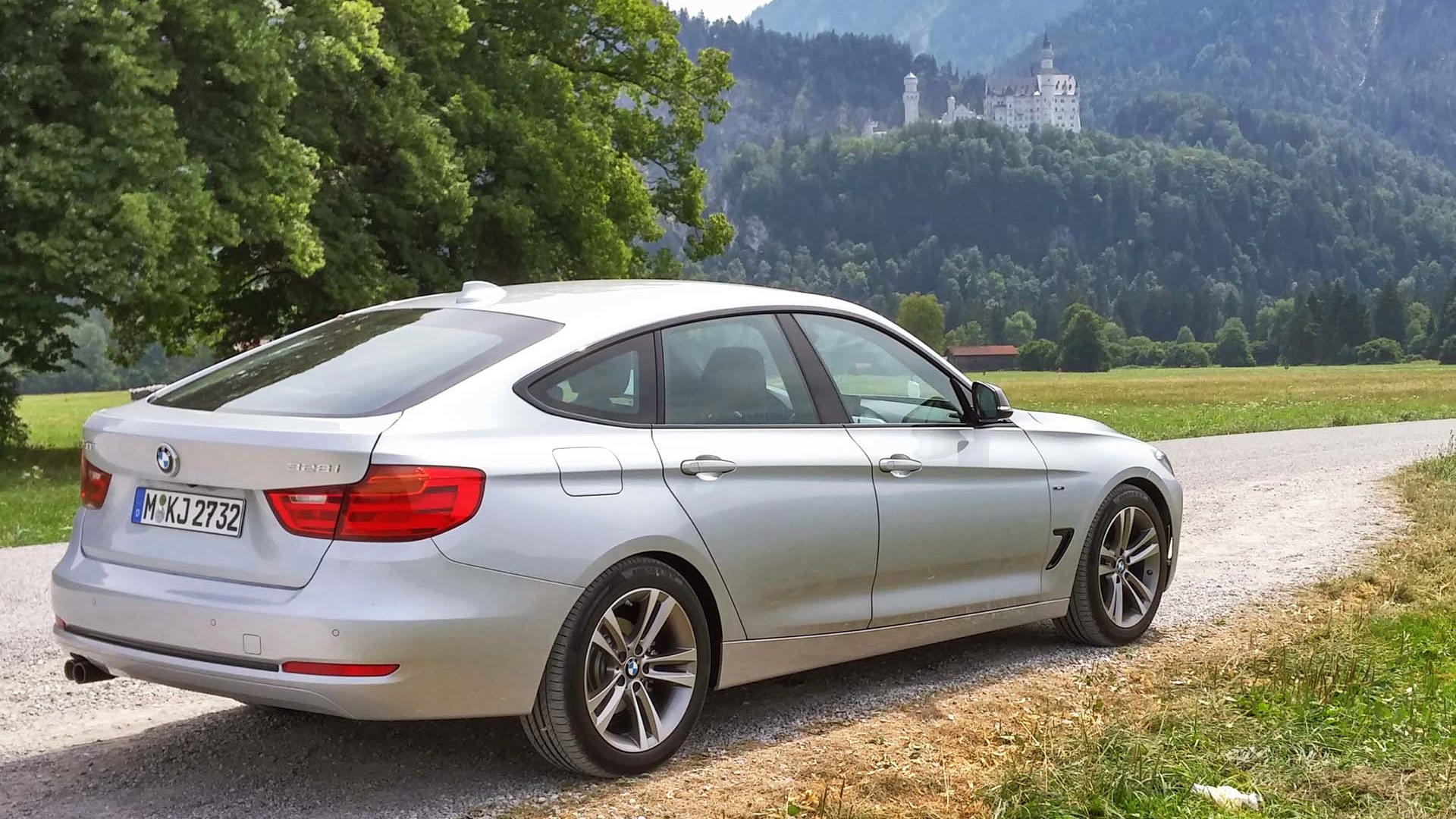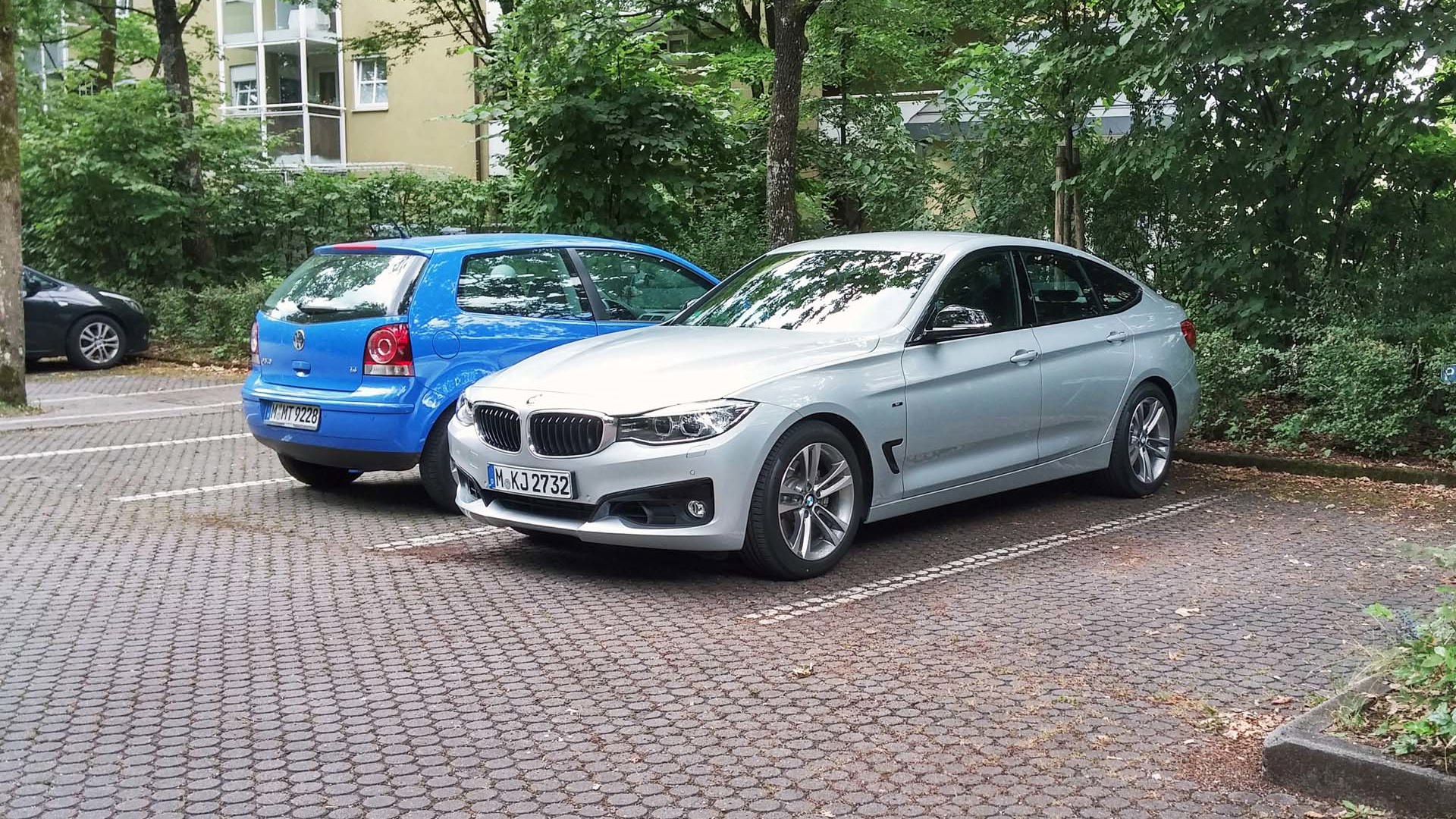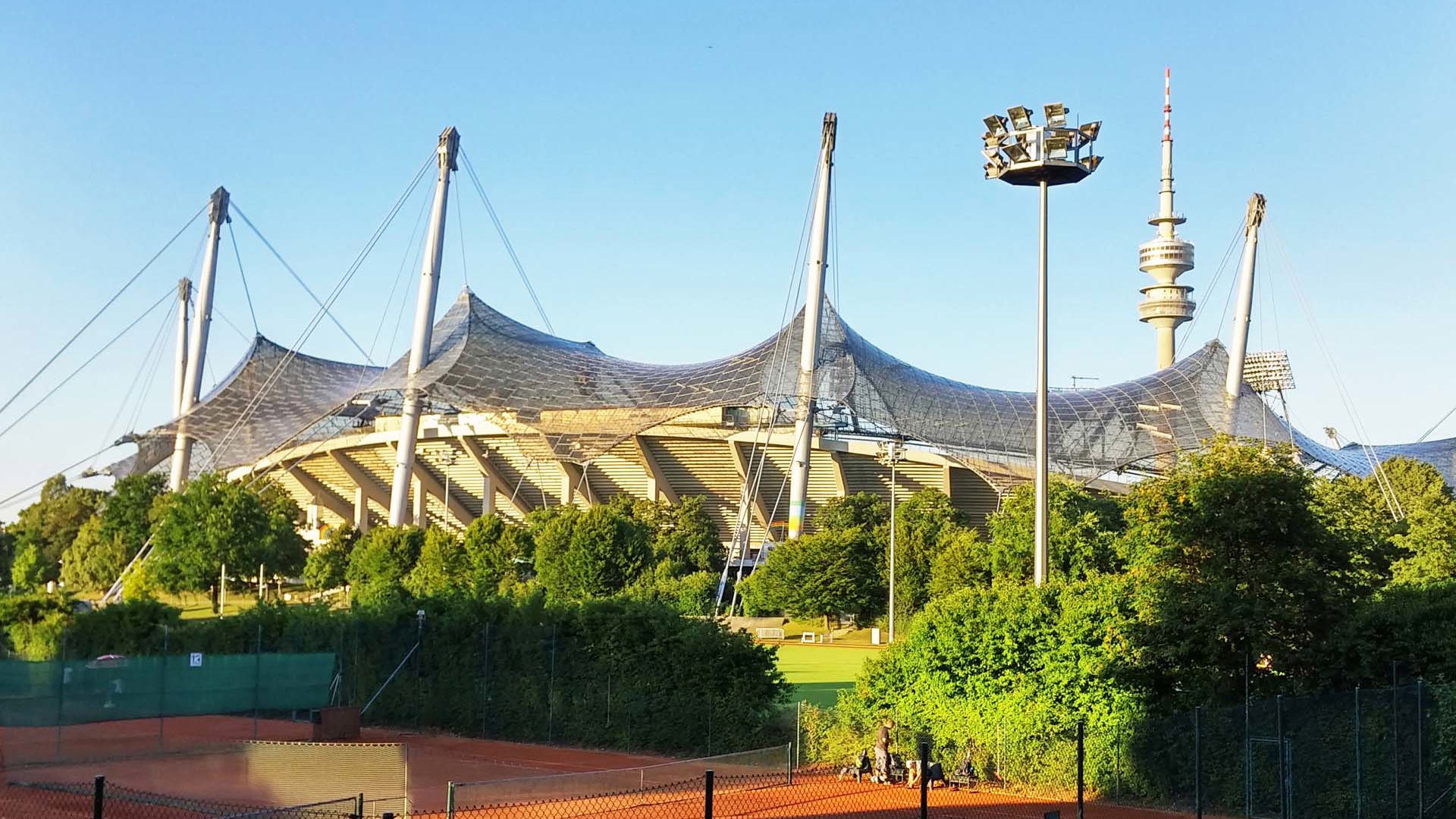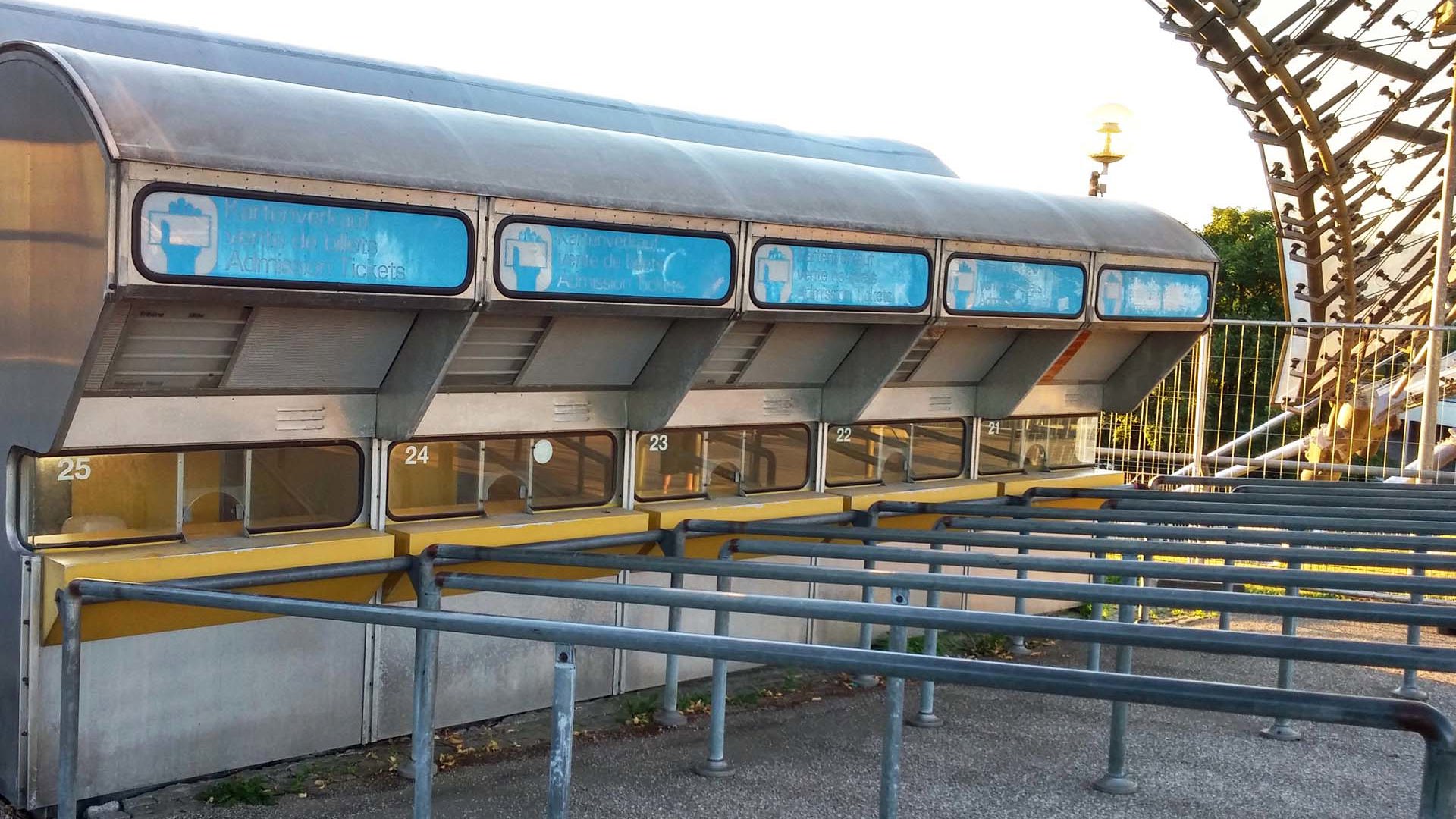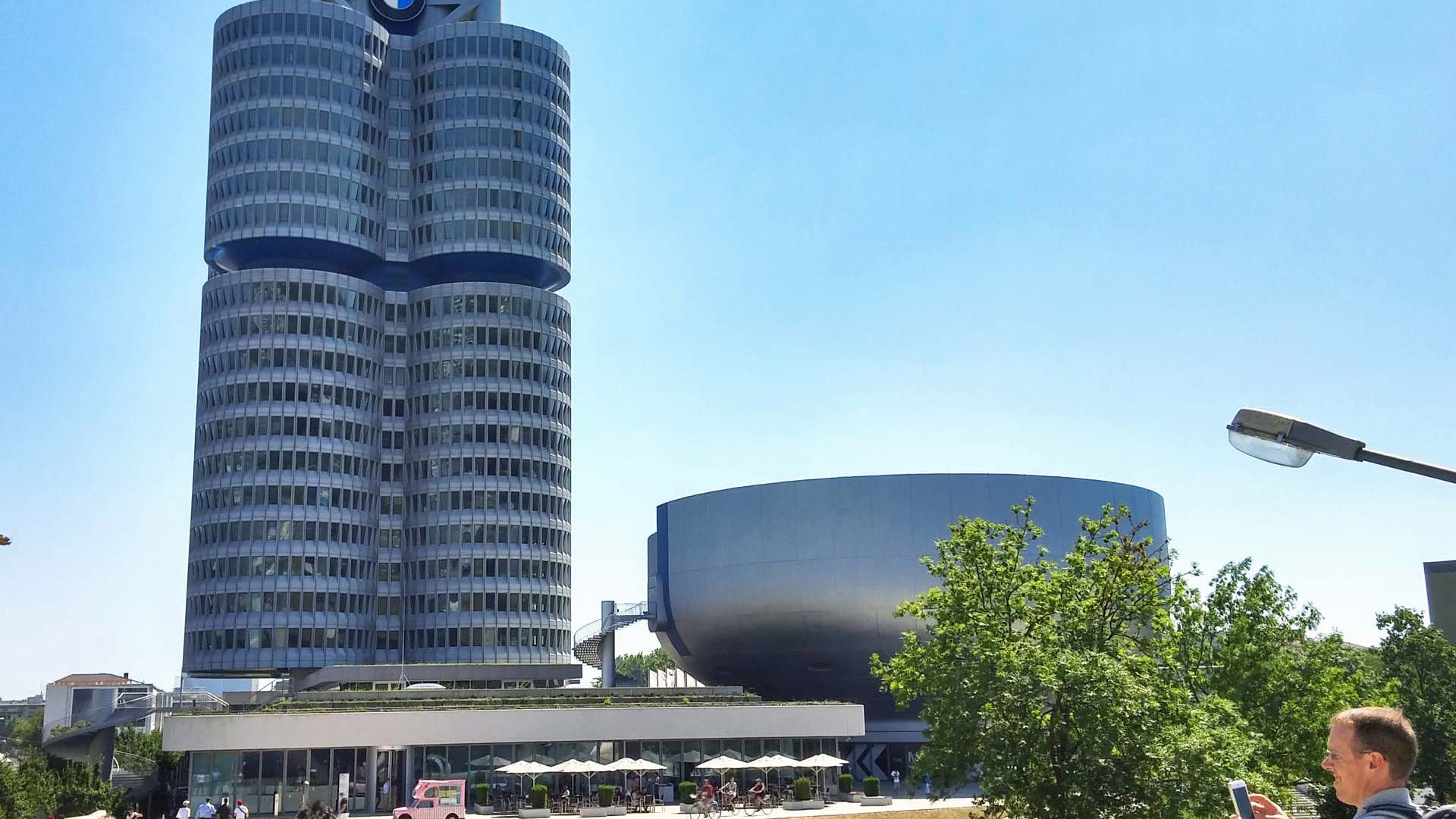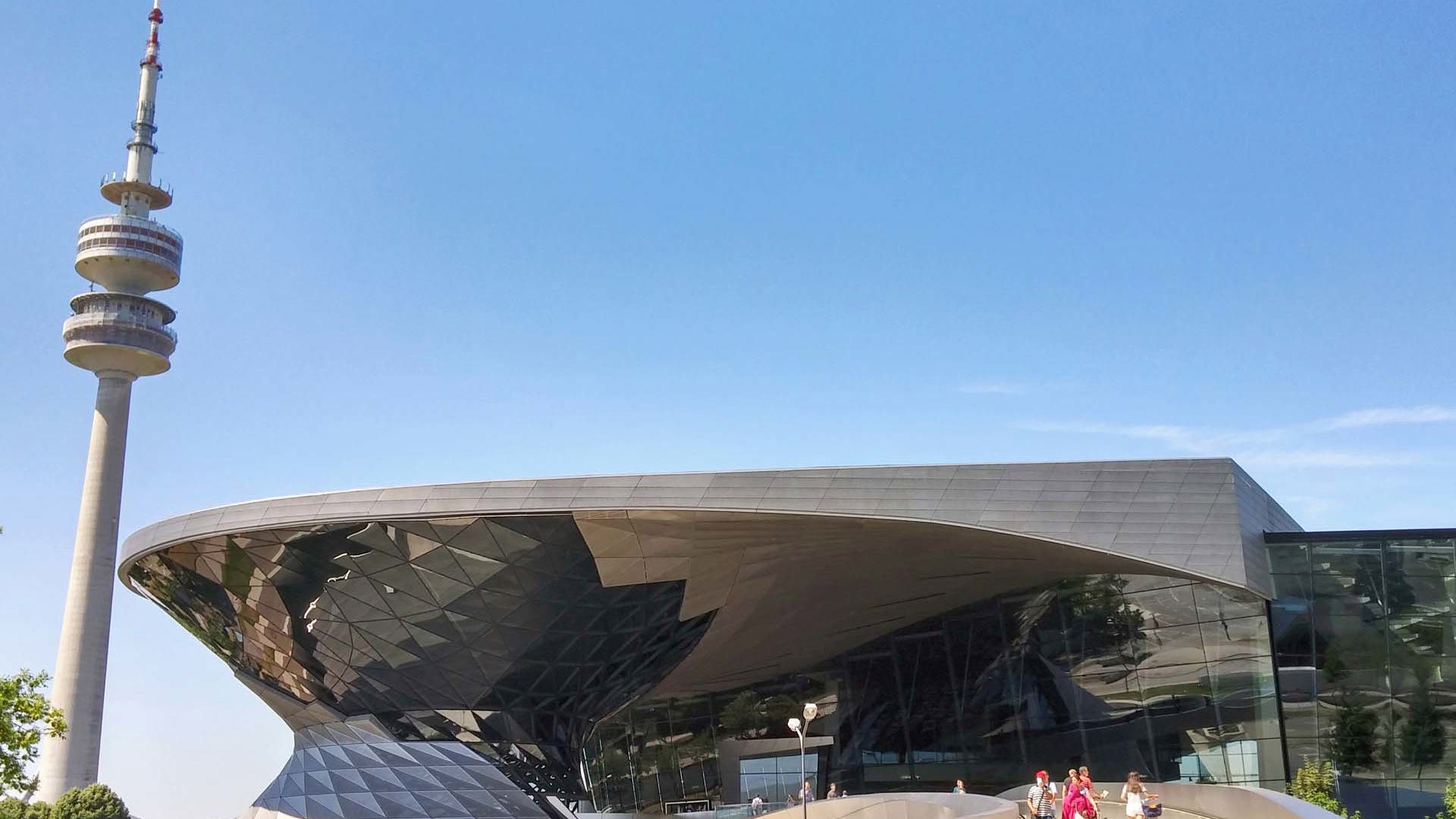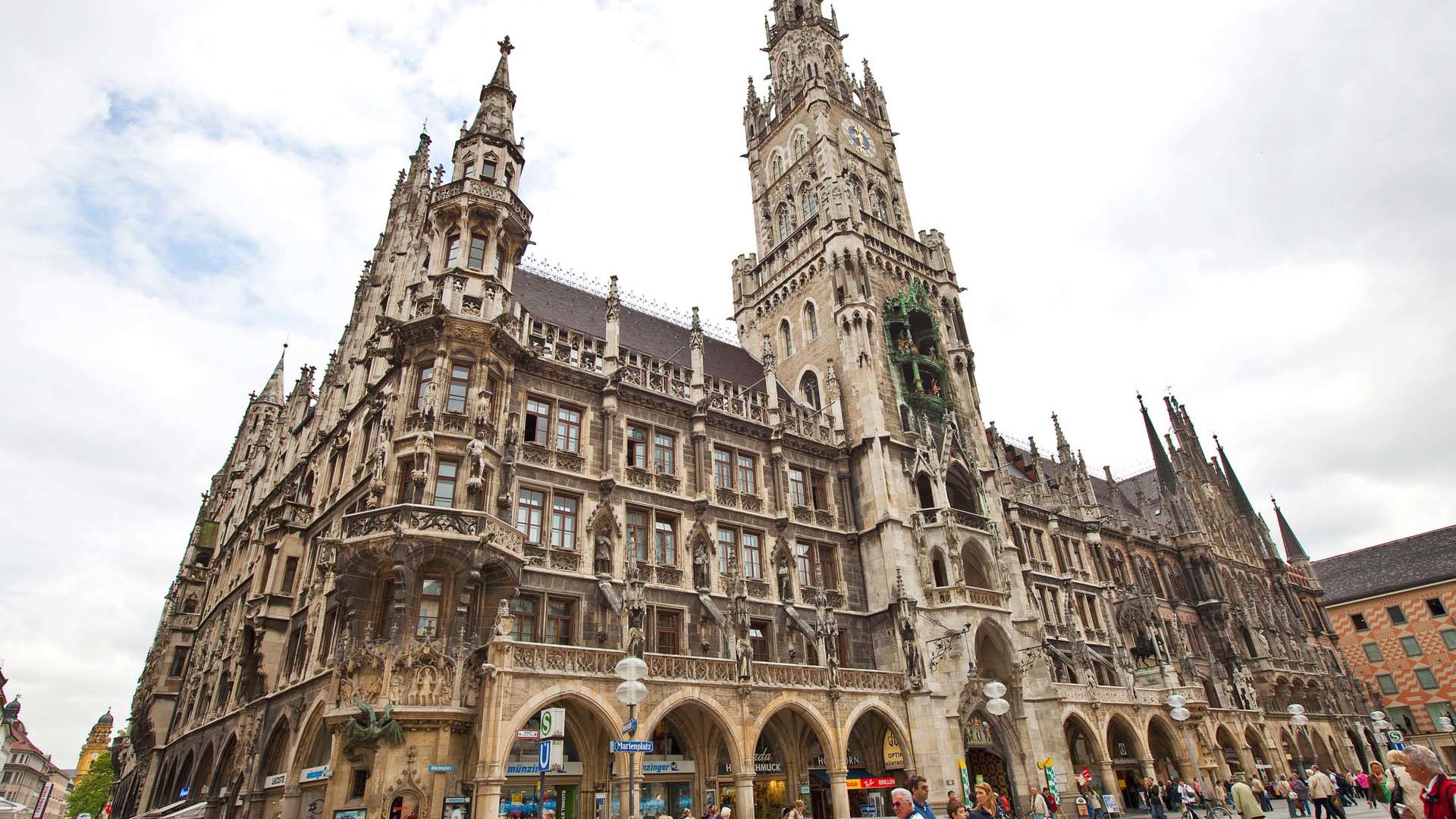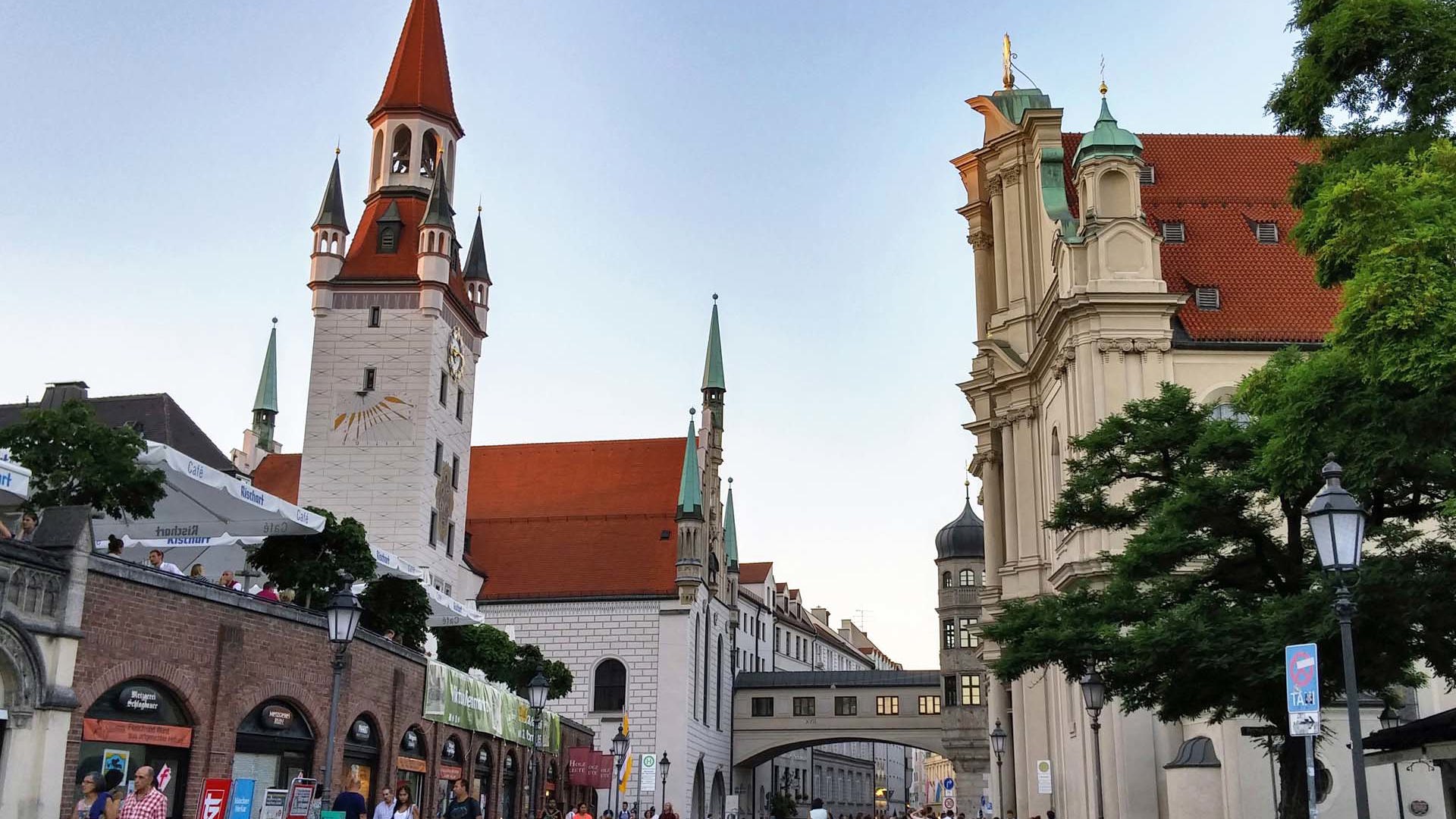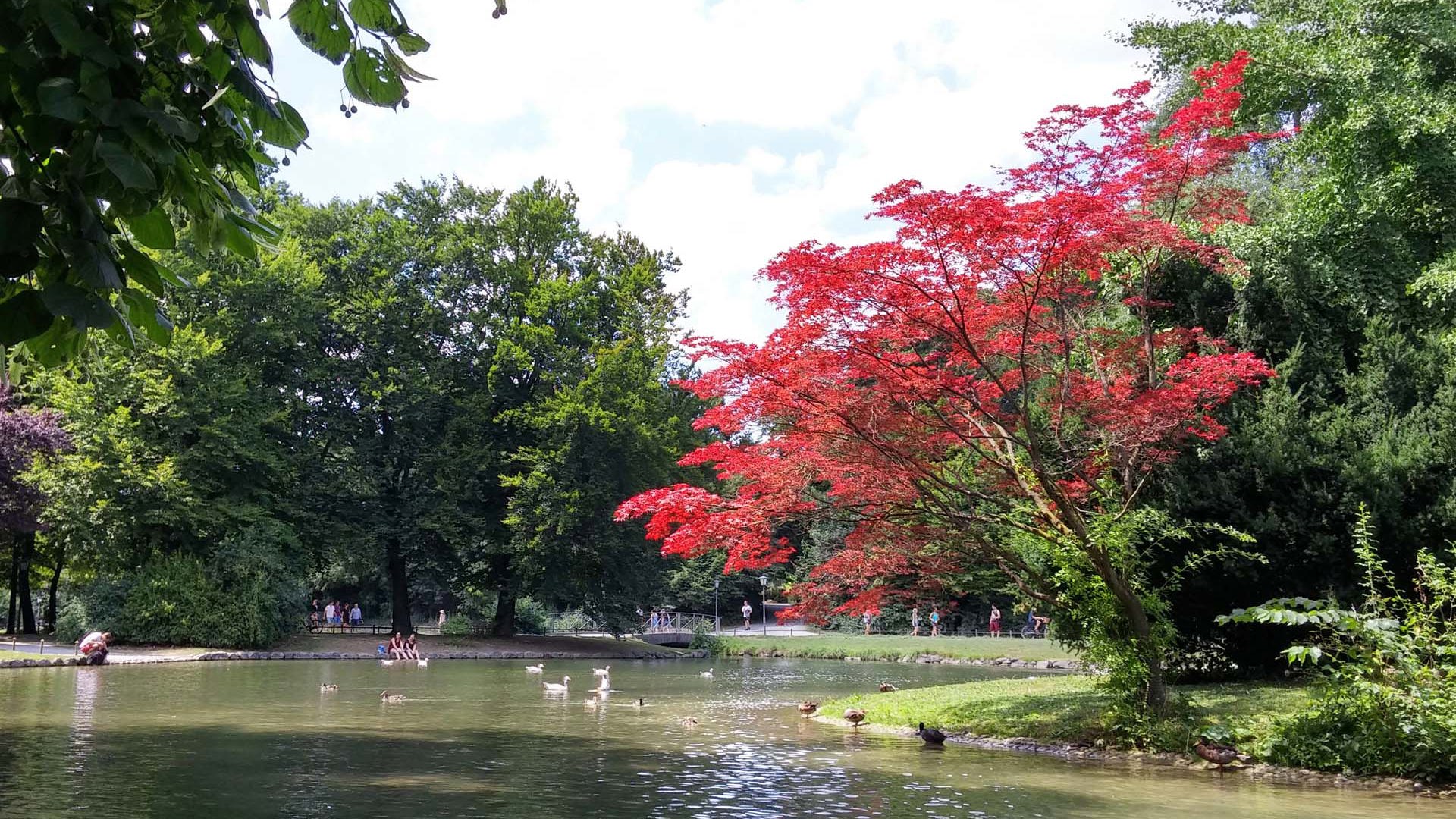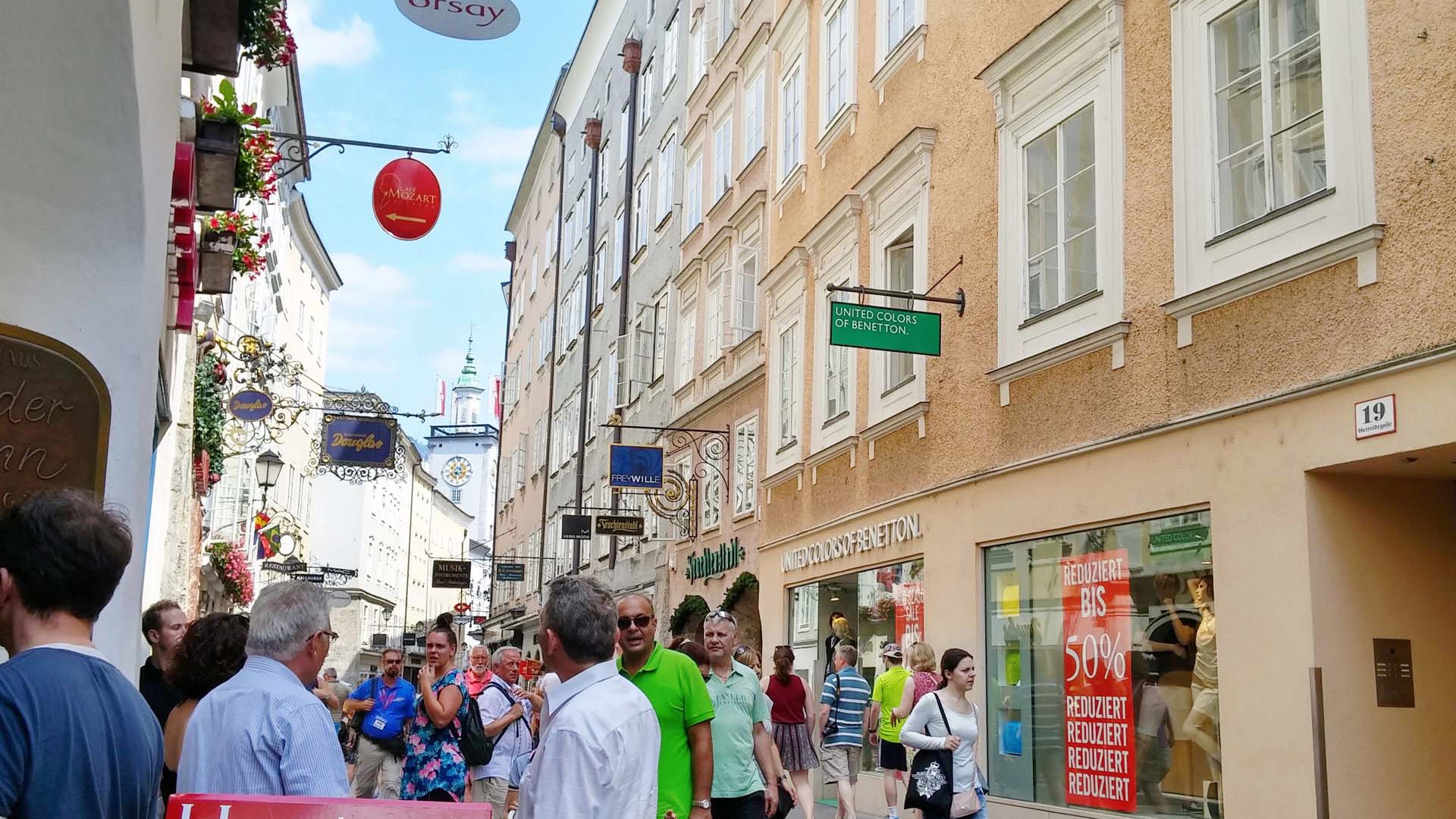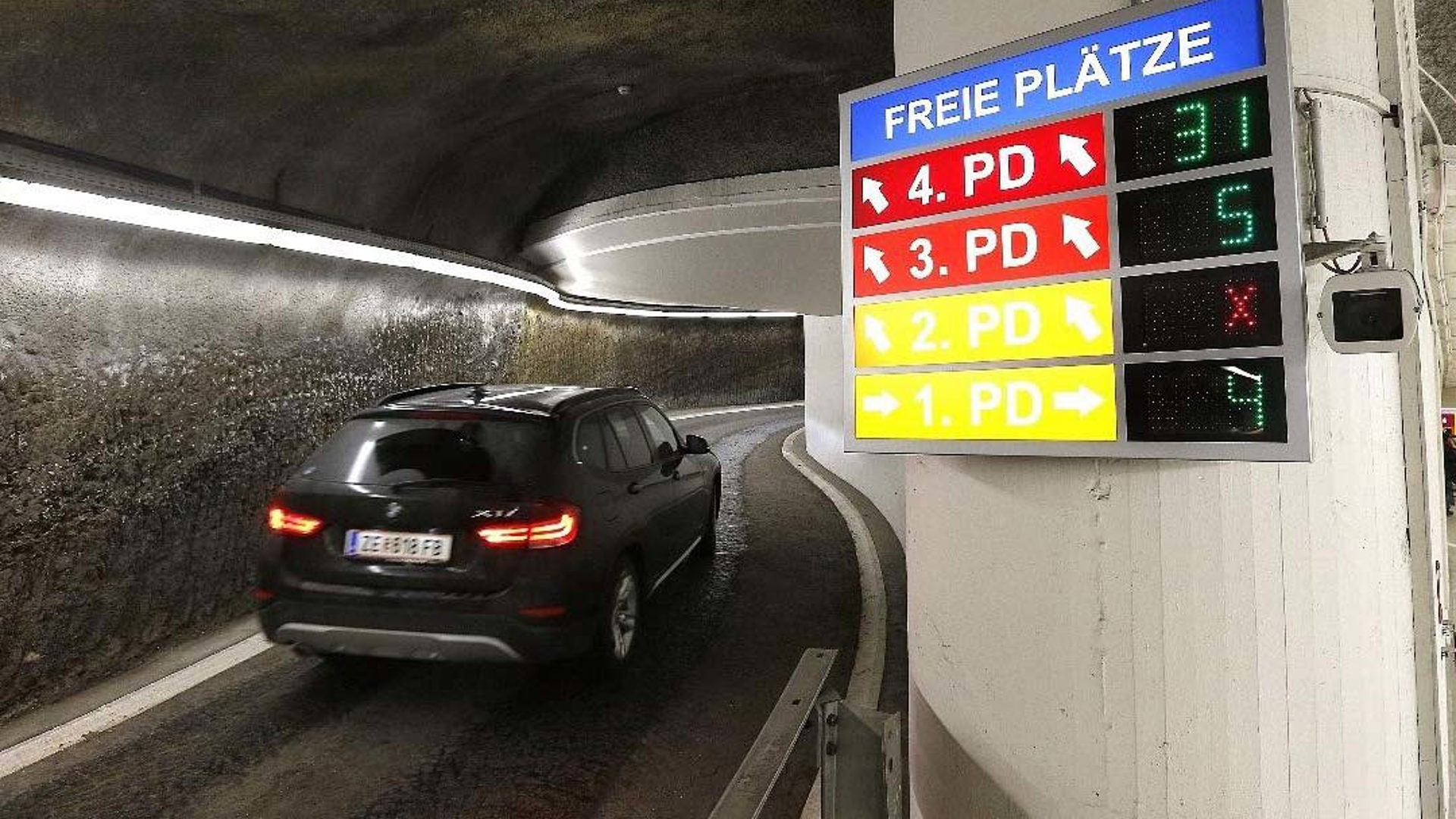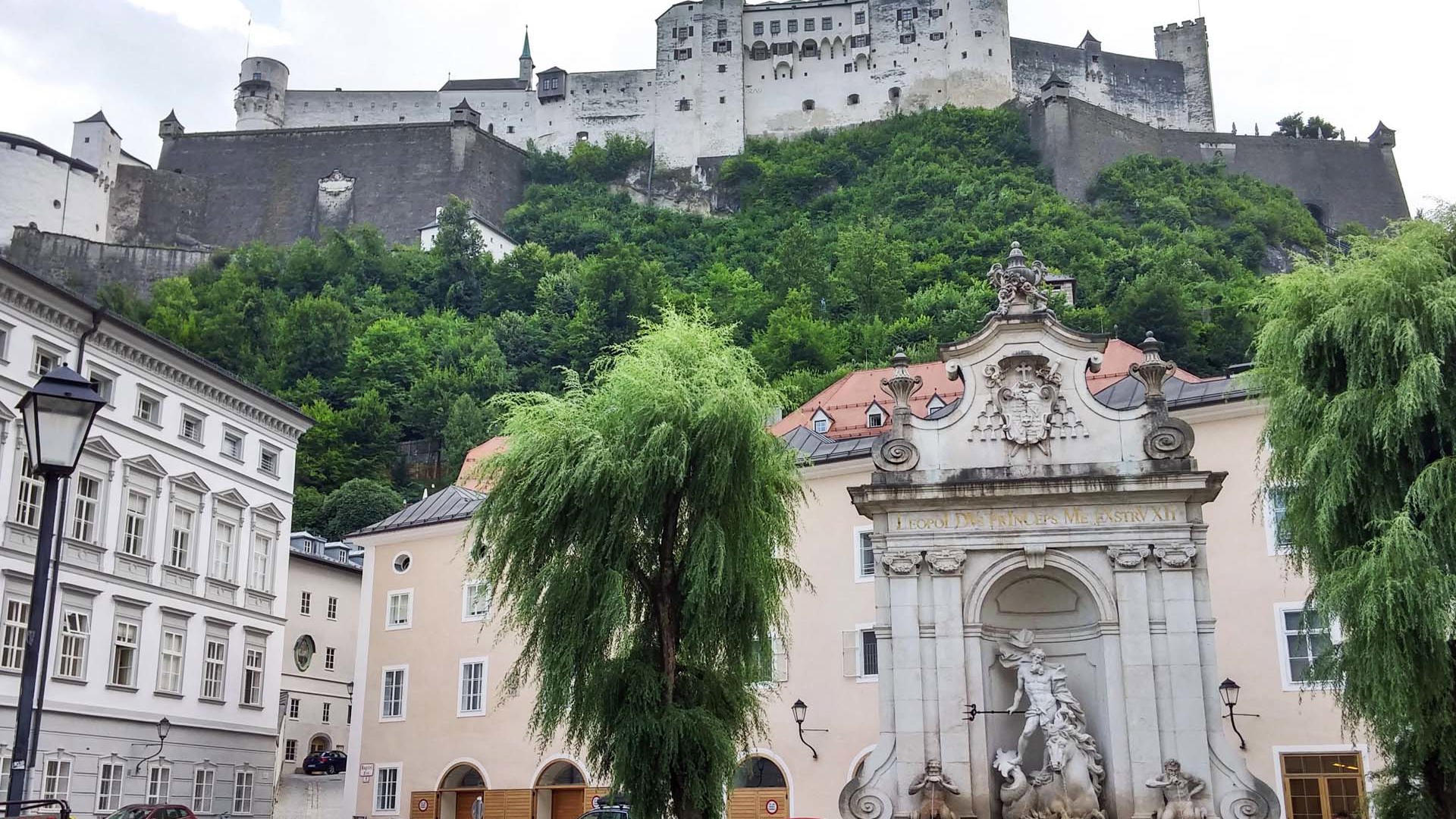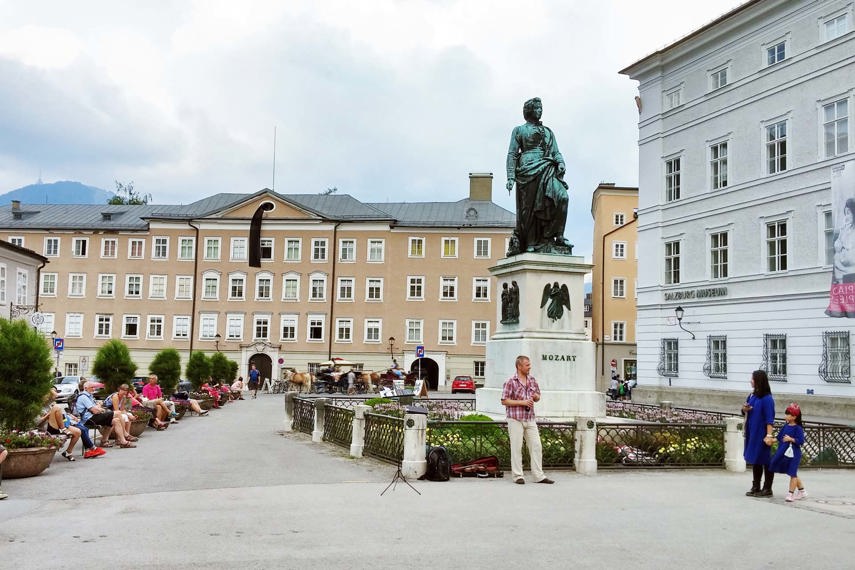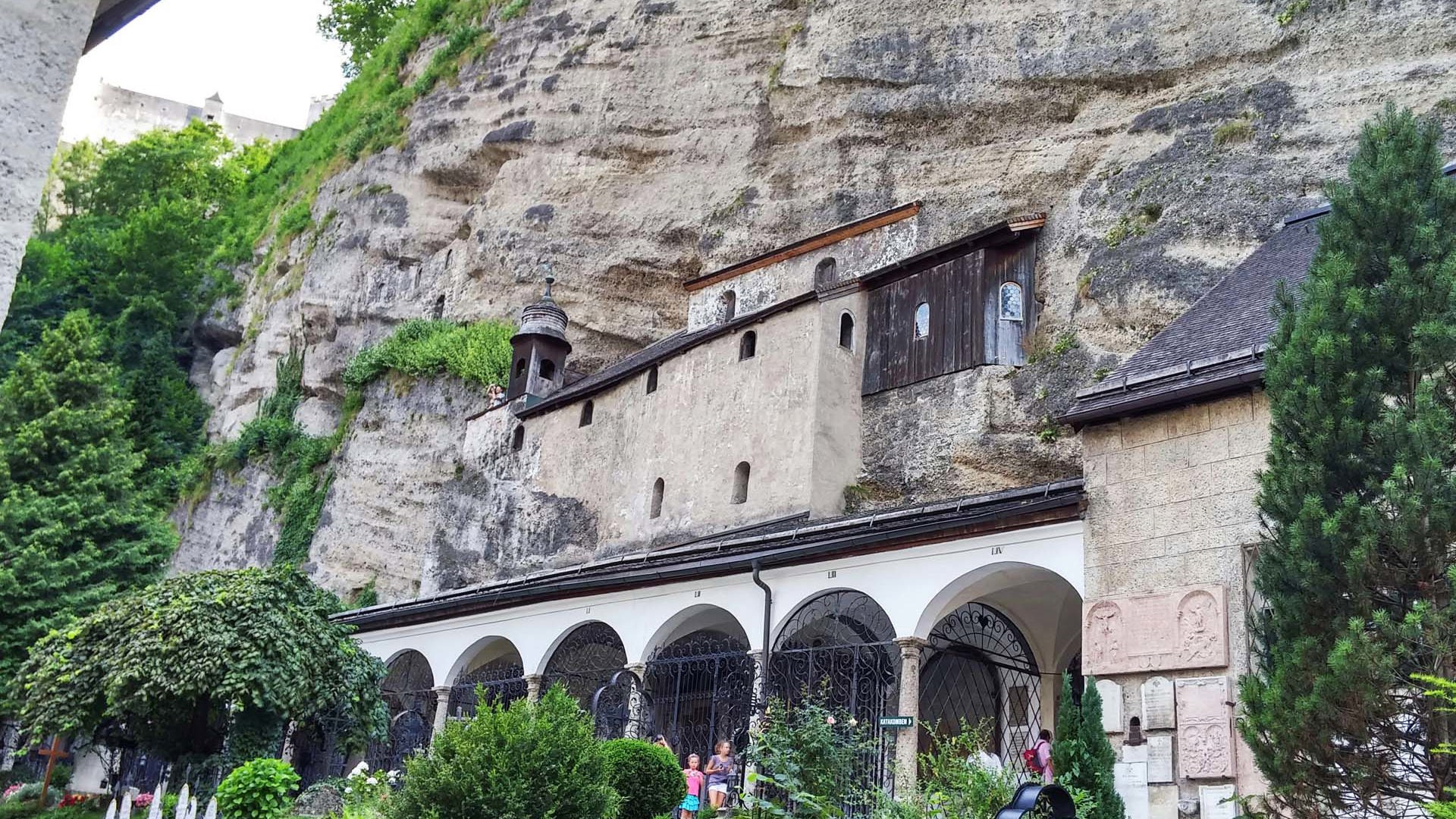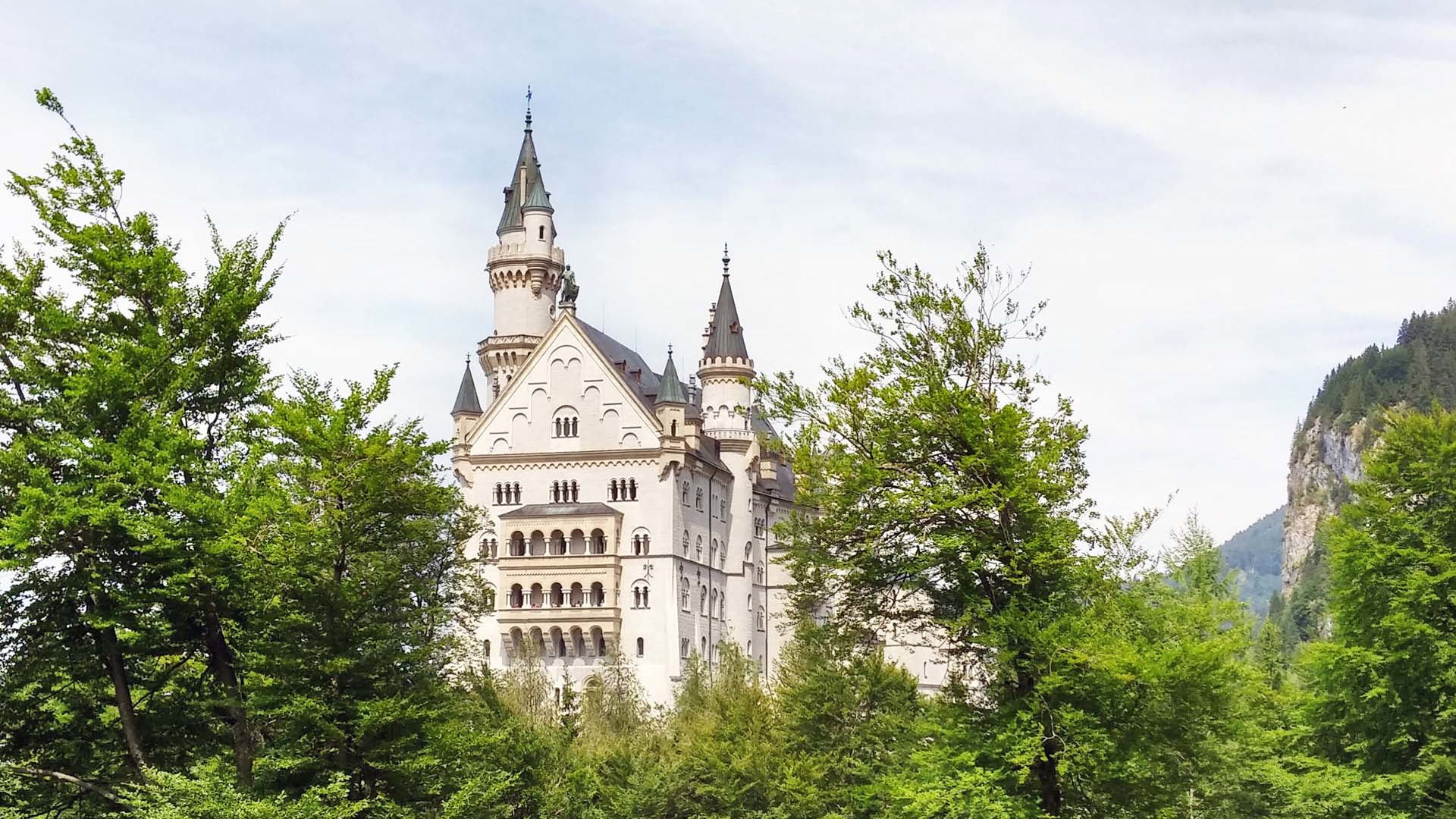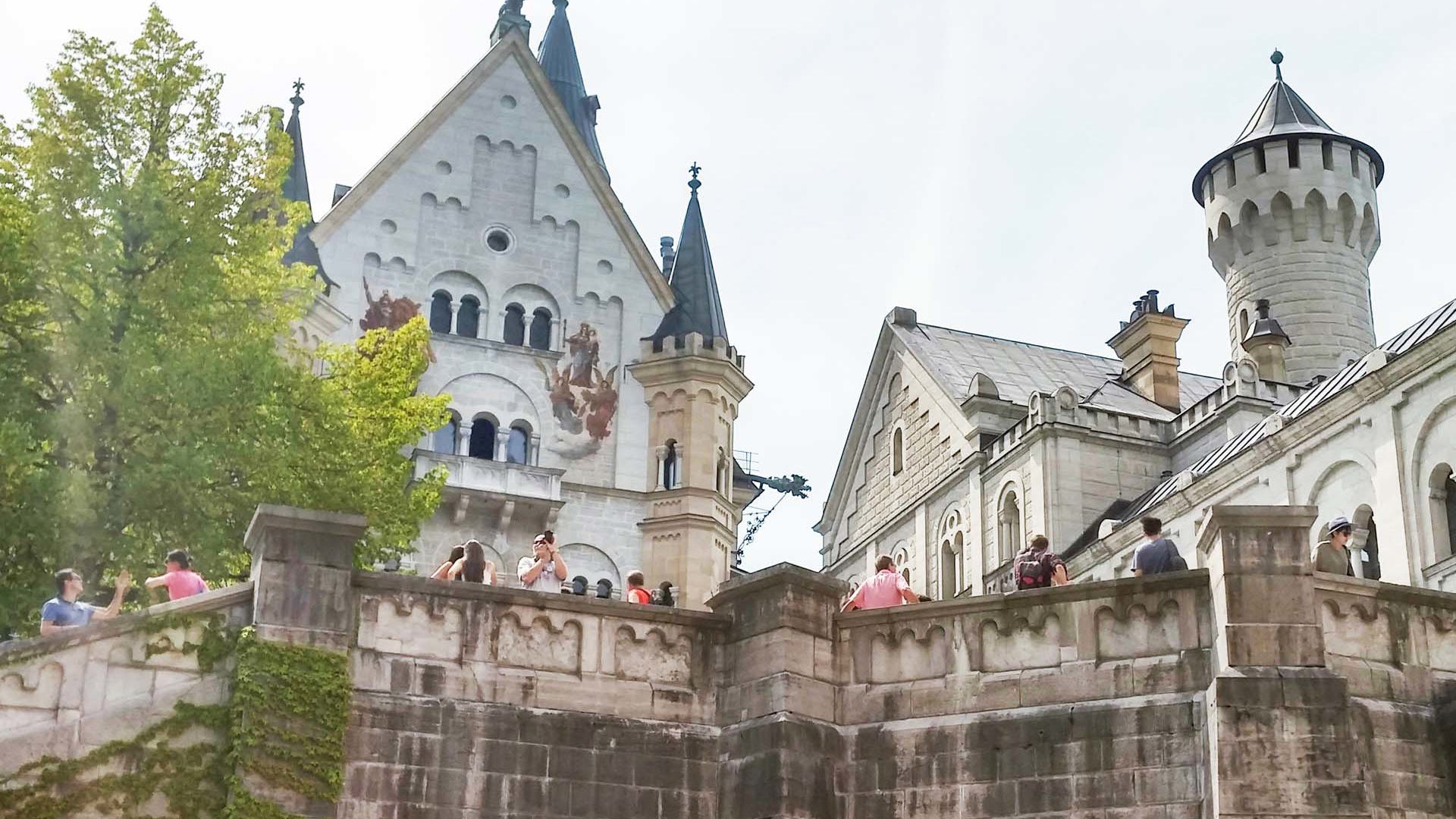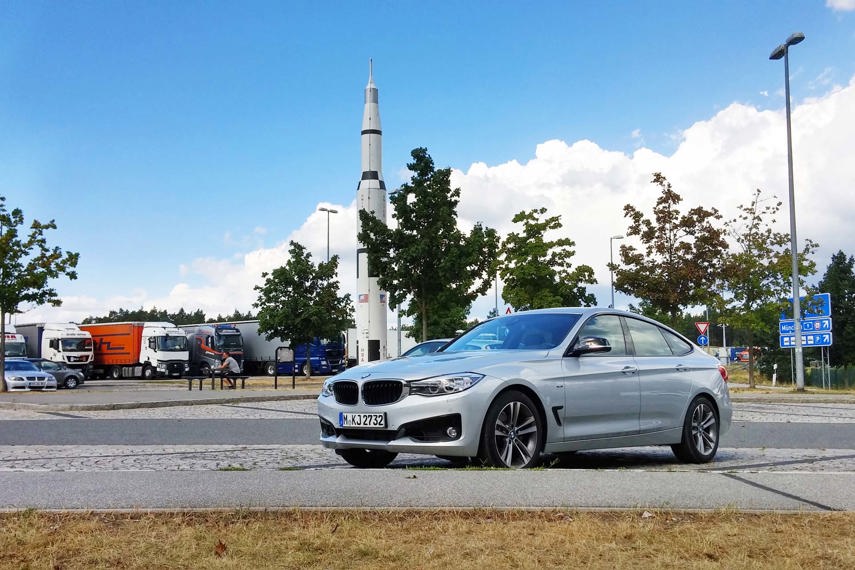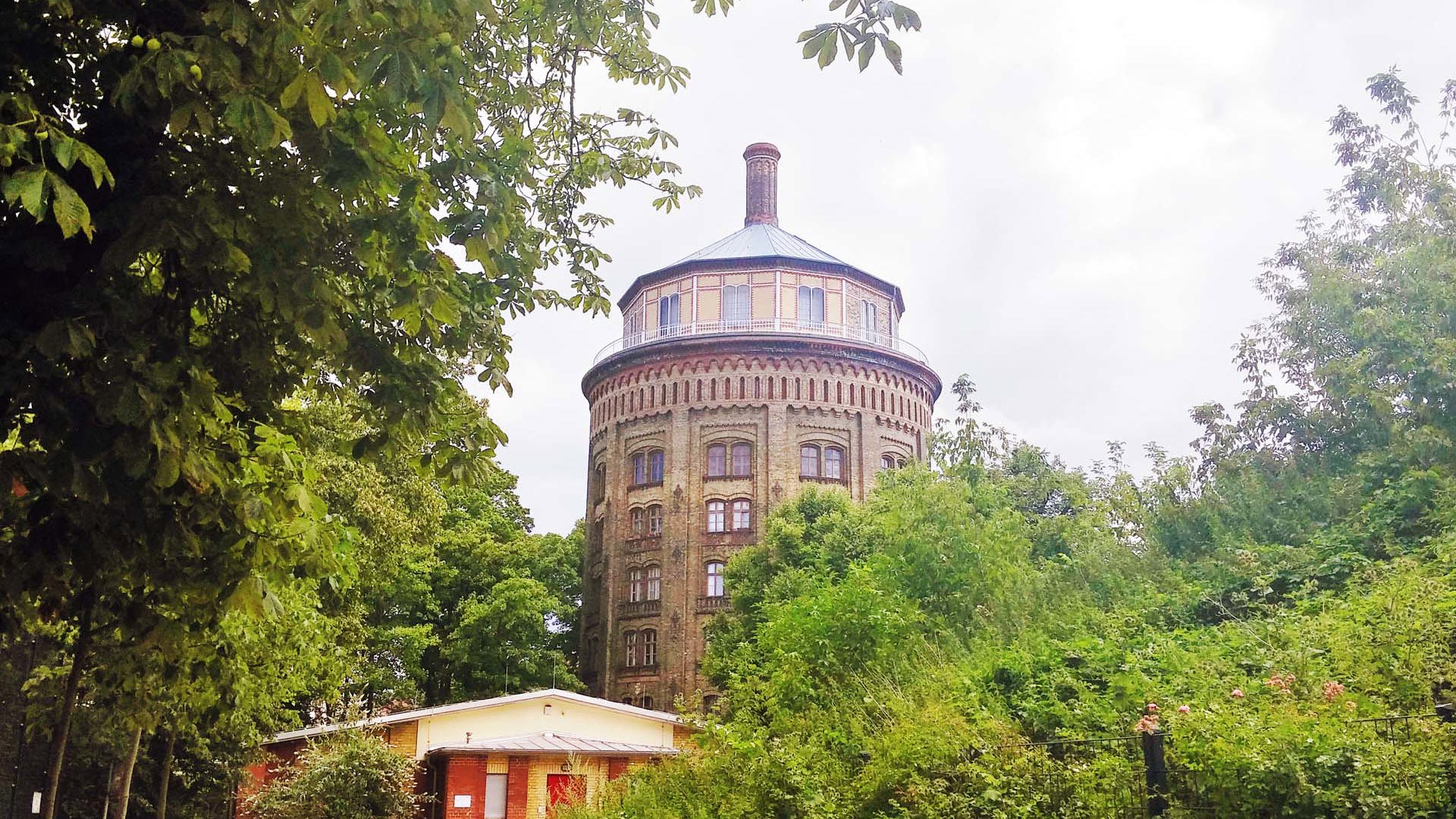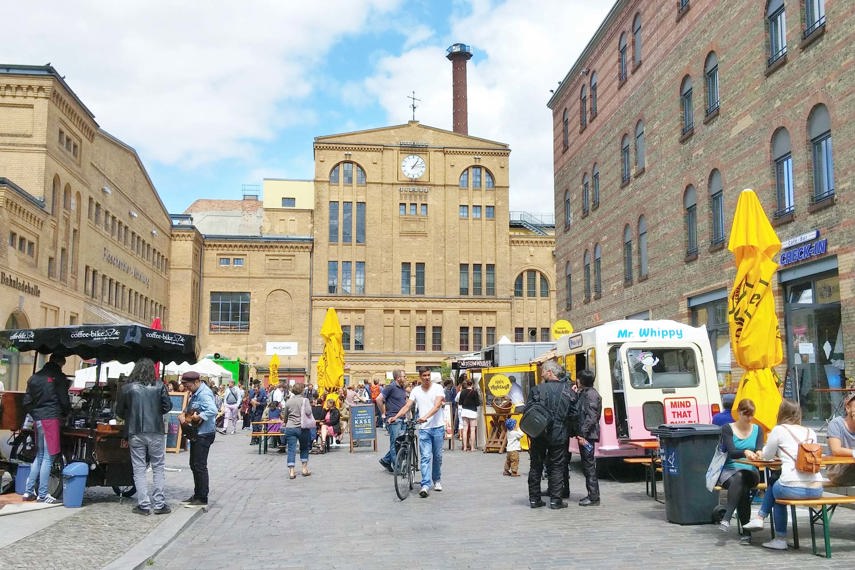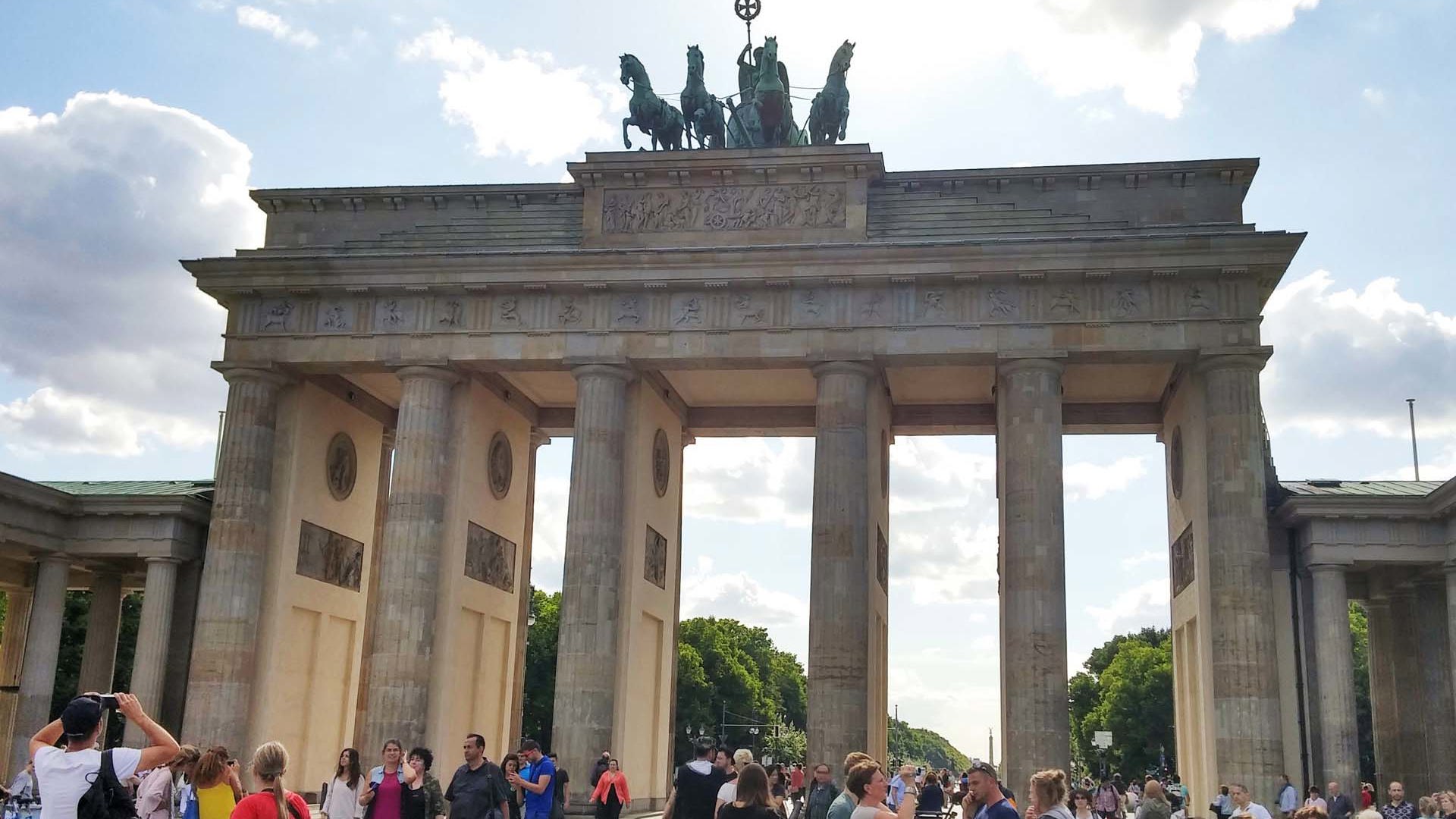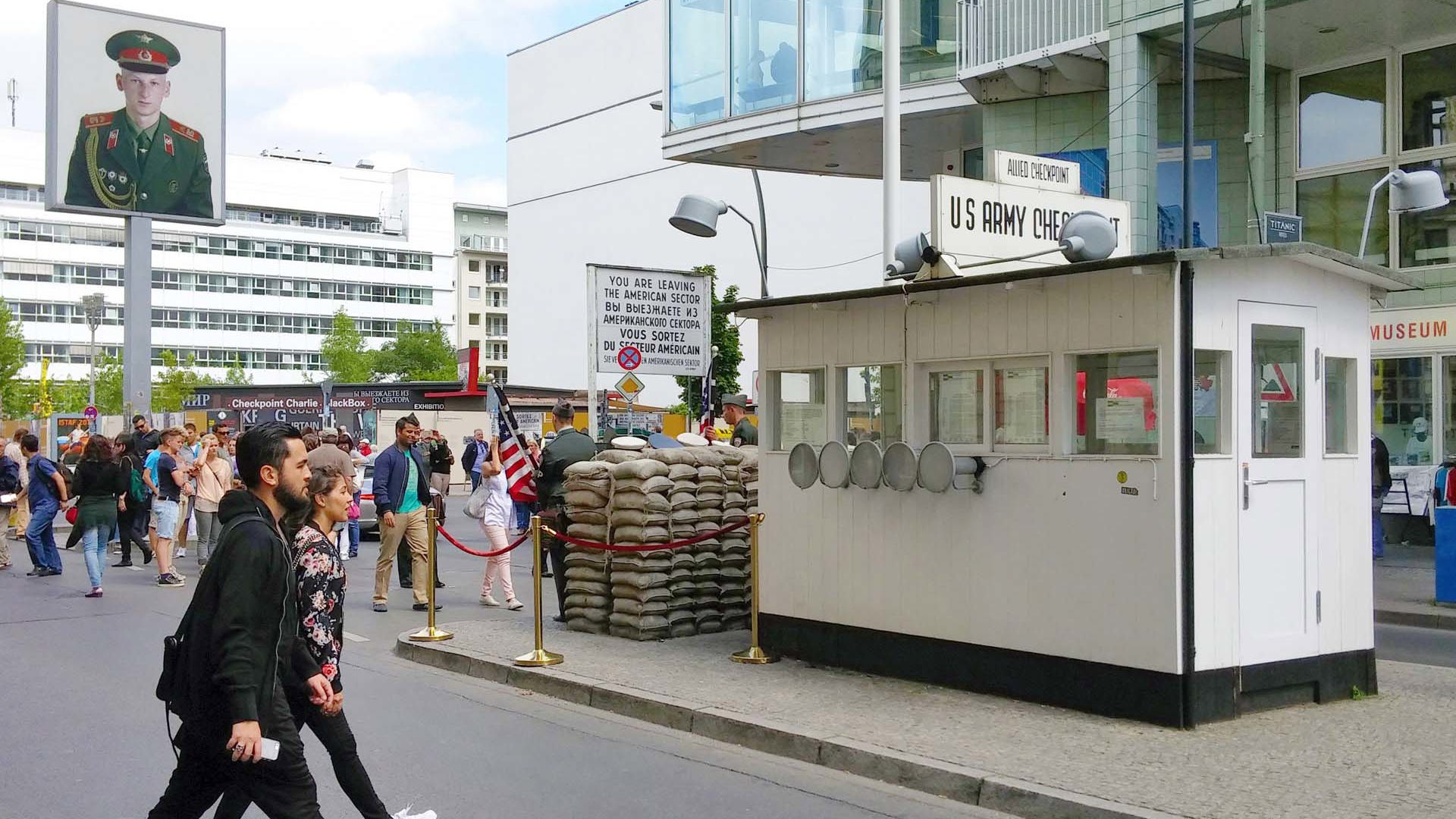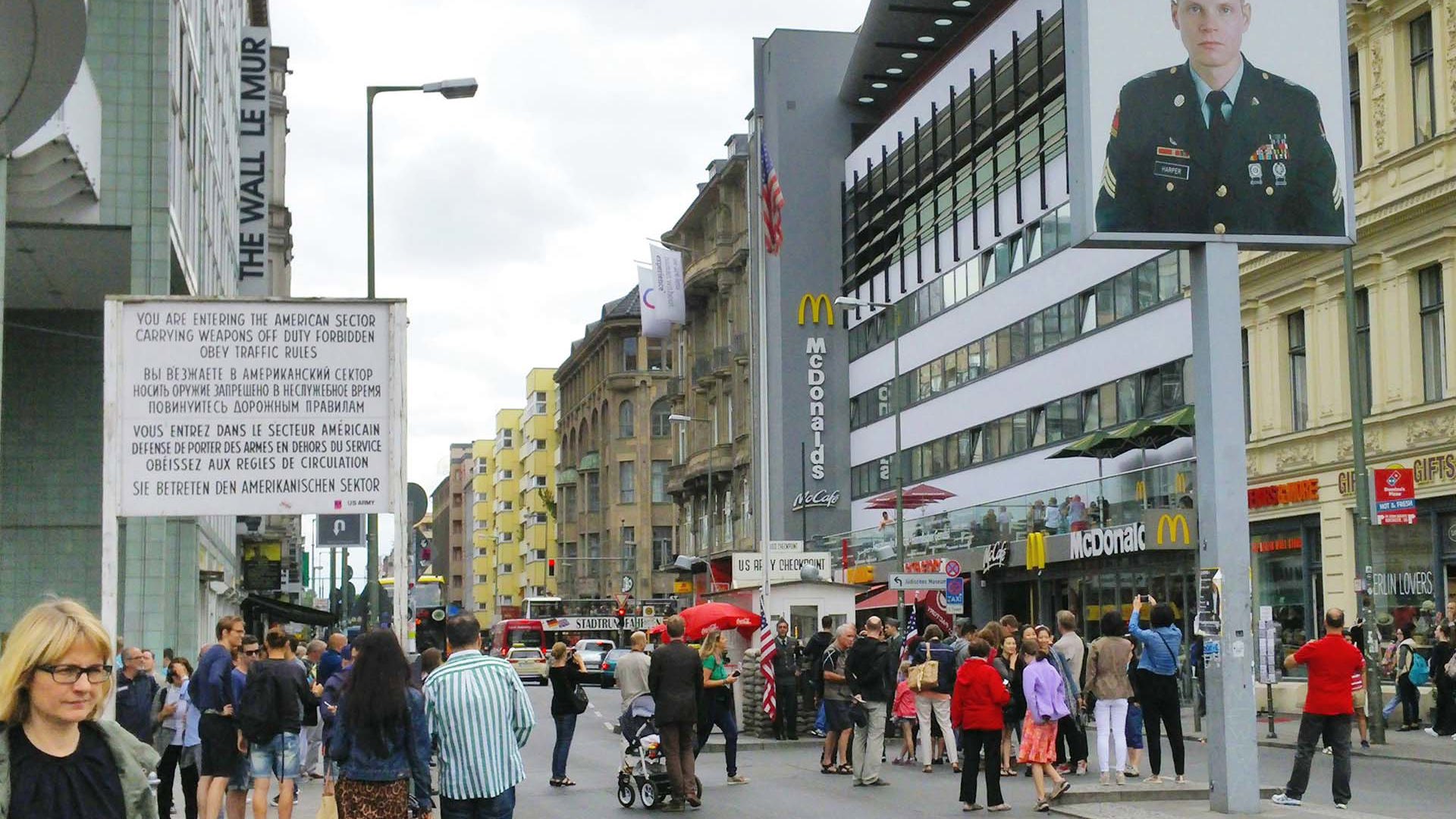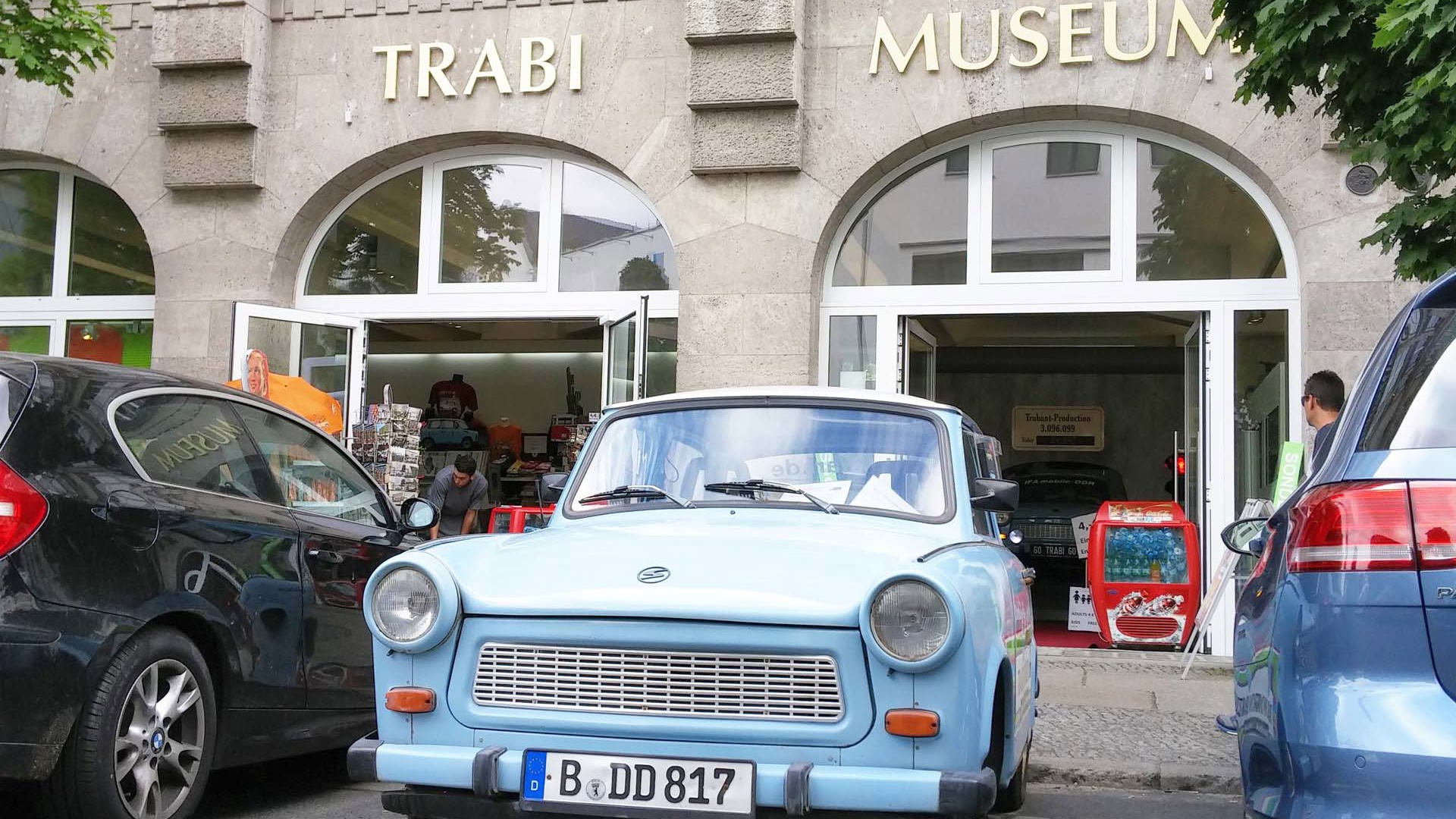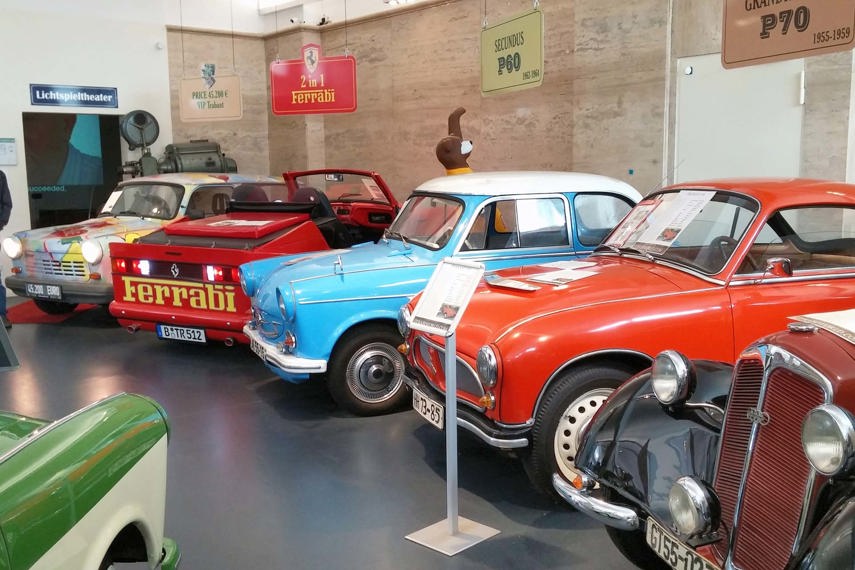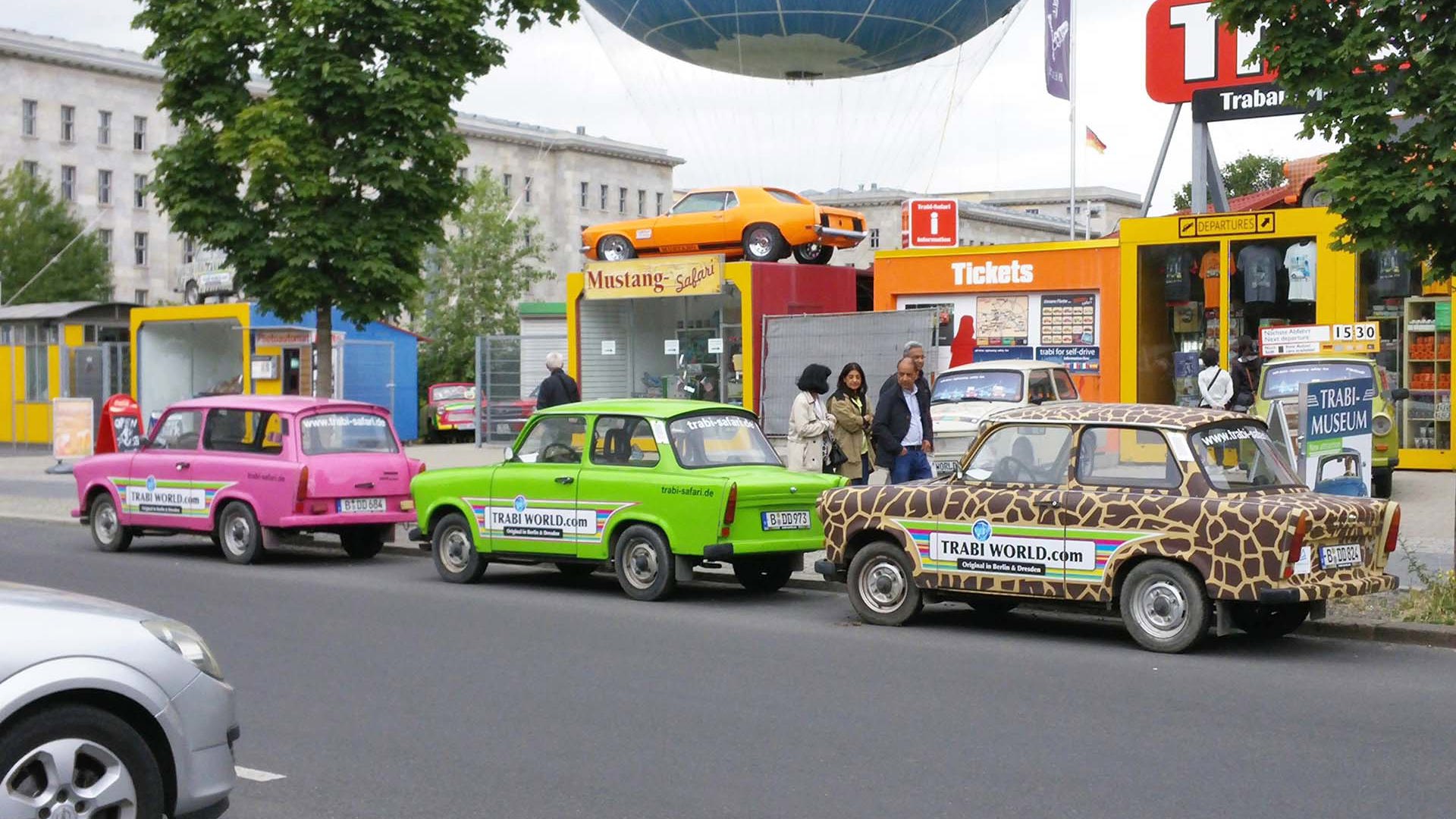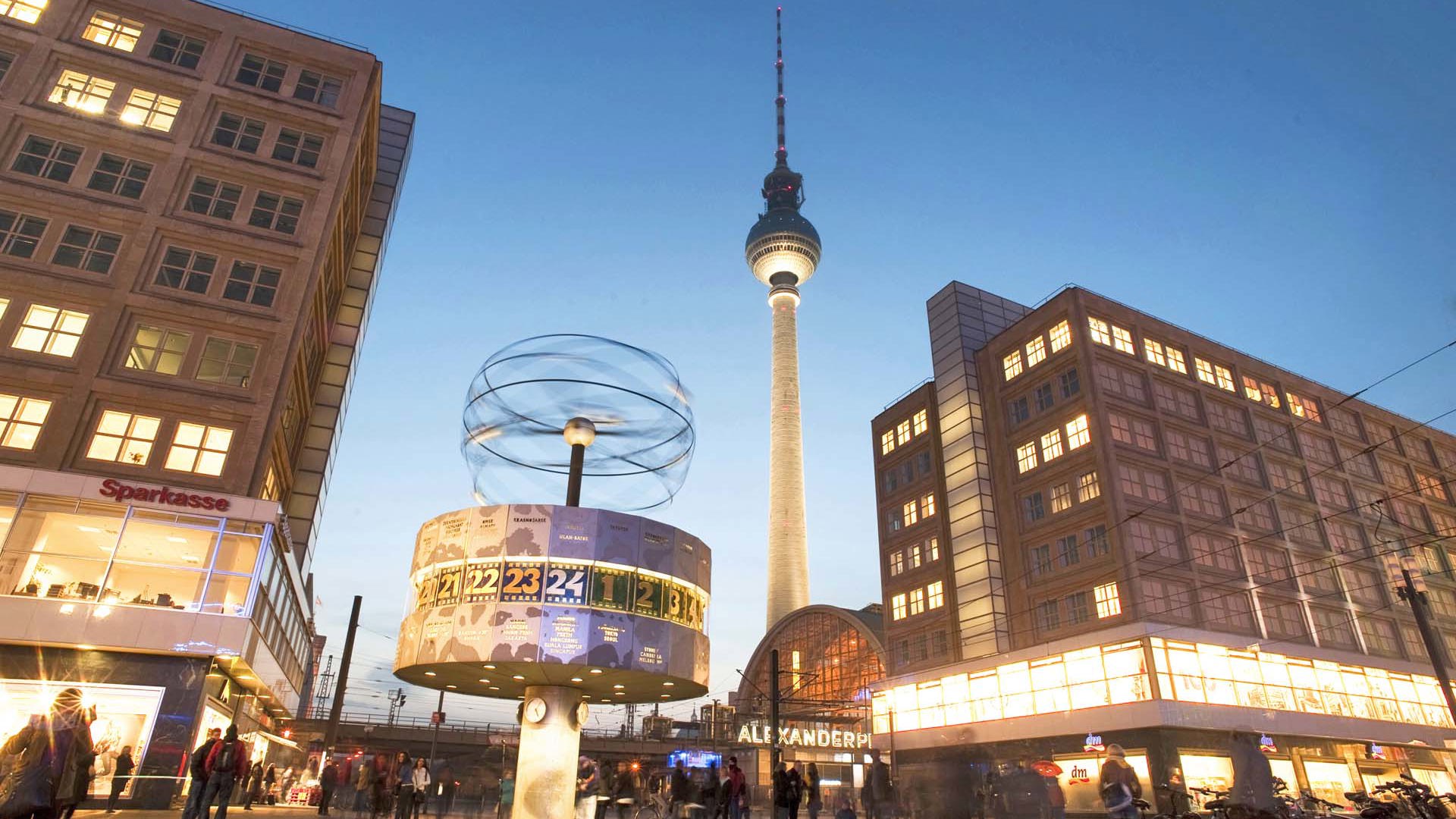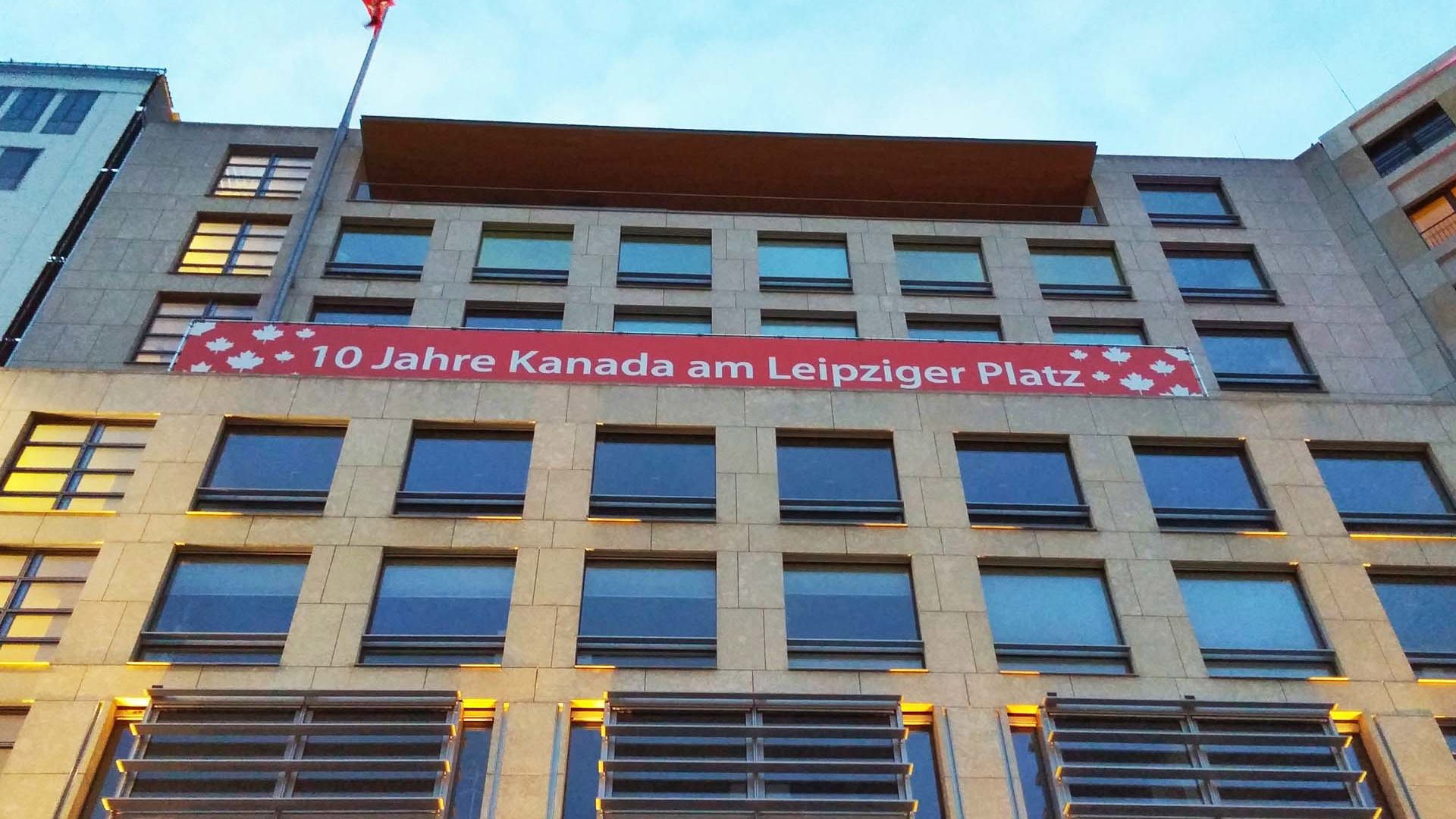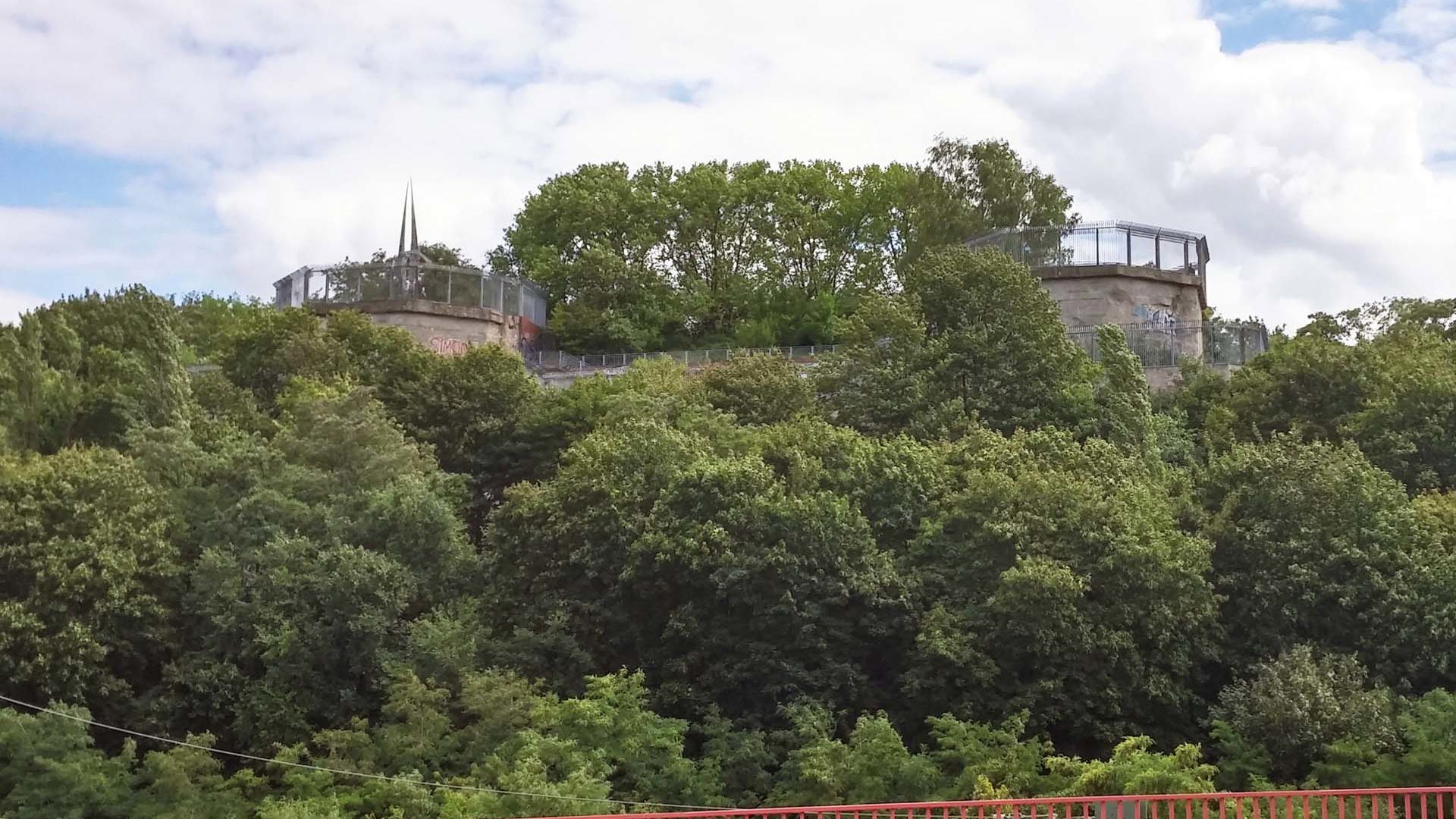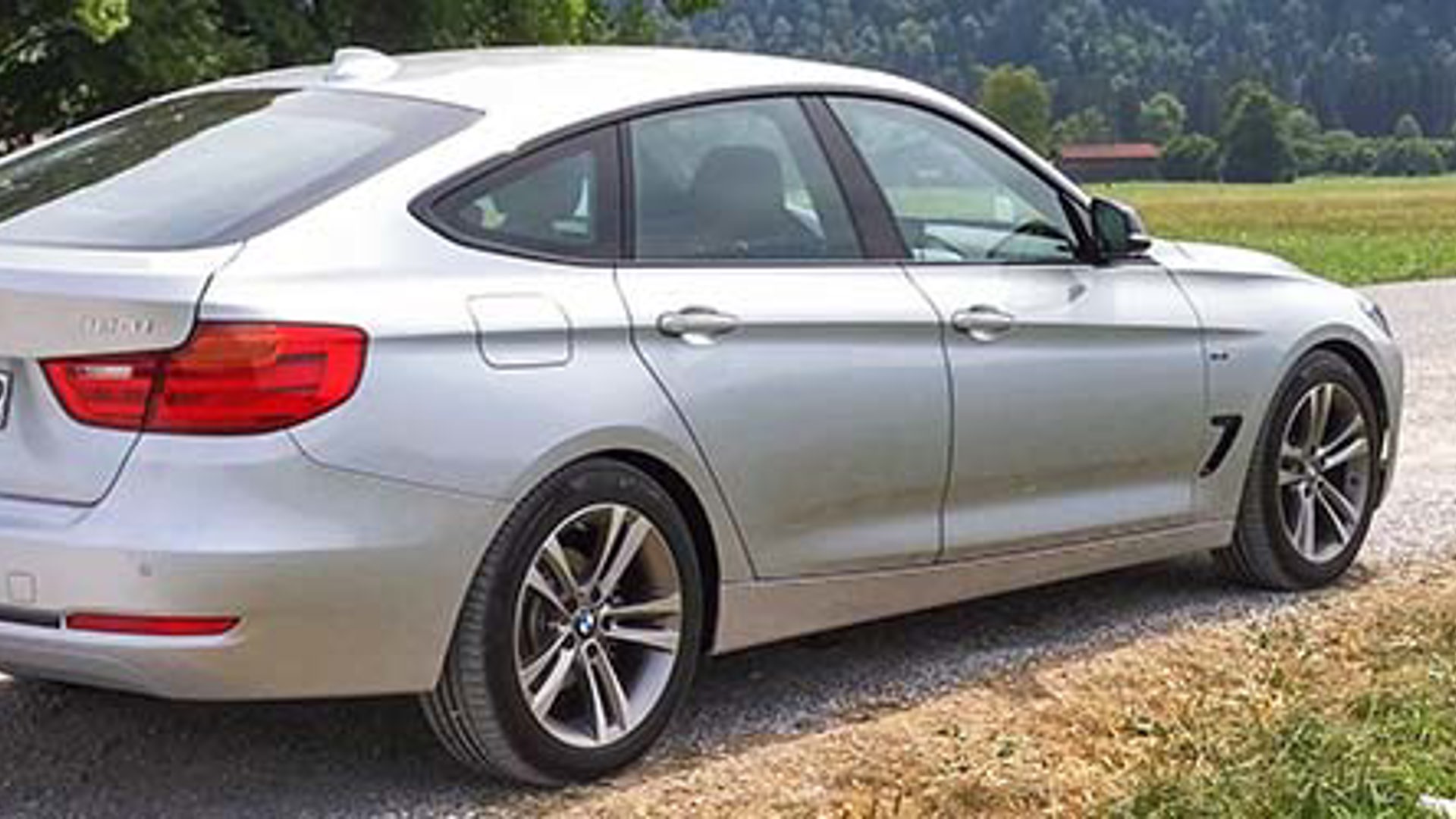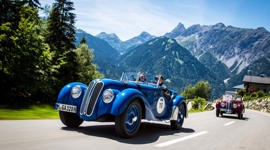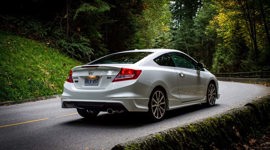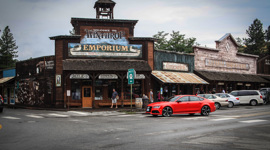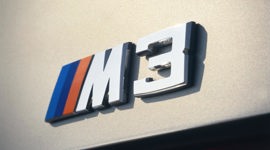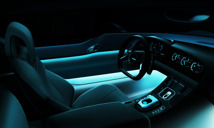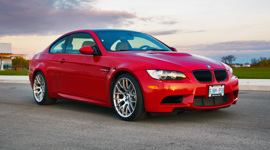I was starting to get worried.
It was the beginning of June, and in six weeks my wife and I would be on a plane to Germany for a two-week vacation. We had plane tickets and places to stay, but rather than reserve train tickets to get from Munich to Berlin – our two main destinations – and back, I'd had the grand idea of requesting a press car to use while we were there. Unlike many of my fellow auto writers who have attended drive events in Germany, I was an Autobahn virgin, and keen on changing that.
But it wasn't looking good. The first two German automakers I approached told me "bad situations" and "indiscretions" led both companies' home offices to end the practice of lending cars to North American writers visiting Europe. Reading between the lines, it was clear things had not gone as planned for others looking for a taste of European freeway driving.
To many enthusiasts fed up with Canada’s overly restrictive (in my opinion) highway speed limits, just the thought of being able to drive as fast as you want is enough to make one's right foot quiver in anticipation. Combine that with a powerful car, and it's not hard to imagine what might have happened to prompt those press car guidelines.
Let me clarify: keen as I was for first-hand Autobahn experience, "burying" the speedo needle in a 250-km/h car is not on my bucket list. All I wanted was the chance to drive as quickly as I felt comfortable doing, which is usually significantly faster than the 115-120 km/h one can get away with on a road like Ontario's Highway 401.
At this point, however, it was looking like if I wanted to drive the Autobahn, it was going to be in a rental akin to the 50-something horsepower Fiat Panda I ended up with on a trip to France a decade ago. That is, until this reply arrived from BMW Canada's media relations department:
"We’d be happy to make a request for a press car out of Munich."
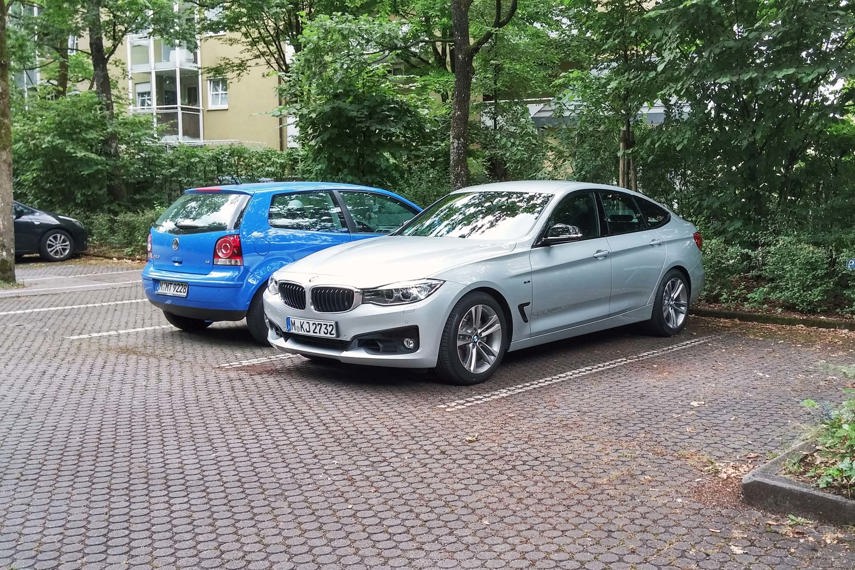 Chris's knight in shining armour: a silver BMW 328i GT
Chris's knight in shining armour: a silver BMW 328i GT
That request went through, and within a couple of days I was booked into a 328i Gran Turismo, the hatchback version of BMW's popular 3 Series. (For the record, the original booking was for a diesel-powered 5 Series, but that car became "unavailable"; I suspect the folks at BMW Germany were worried about the possibility of some Canadian writer accidentally filling the tank with gasoline and wrecking their car.)
Our first adventure was collecting the car at BMW's fleet services building northeast of Munich and driving the 16 km back to our apartment. Not even a kilometre into the trip, I got a good honking-at when a traffic light turned green and I didn't notice, because I couldn't see it unless I craned my neck to look straight up out of the windshield. I was about to launch into a rant, when my wife pointed out the secondary light post to the left of us. Oh.
Our apartment, located in a neighbourhood called Neuhausen (literally, 'new houses'), included off-street parking. It was also notable for streets barely wide enough for one lane of traffic between cars parked on either side. Factor in the cyclists (they're everywhere! I should have asked for a couple of BMW bikes to use, too!) and it was clear city driving here would require close concentration.
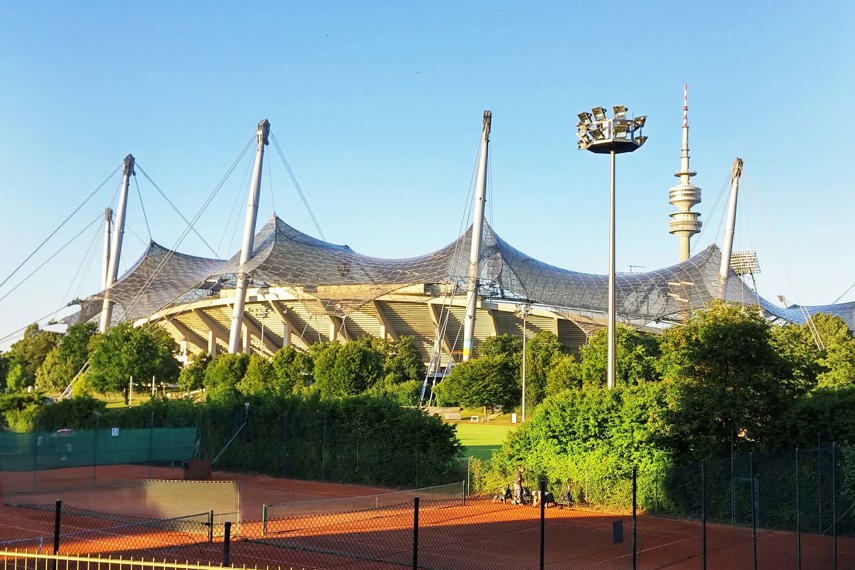 Munich's Olympiapark – Olympic Park from 1972 Summer Olympics
Munich's Olympiapark – Olympic Park from 1972 Summer Olympics
The apartment was near Munich's Olympiapark, the site of the 1972 Summer Olympics. Dubbed "the Cheerful Games" by the West German government in an effort to erase memories of the 1936 Berlin Summer Games, staged during the Nazi regime, the '72 games will unfortunately always be associated with the Munich massacre, where Palestinian terrorists killed nine members of the Israeli Olympic team.
Design-wise, the Olympic park is visually a seventies time capsule, but is well-used as a public recreation space, with tennis courts, jogging/cycling paths and a café. Interesting fact: the stadium was built in a pit created during a WWII Allied bombing raid on Munich.
Our reasons for visiting Germany weren't all about driving, but it was fitting that I wound up borrowing a car from BMW: Munich is home to BMW's global headquarters, including an office tower, vehicle production facility, and a museum, known collectively as BMW Welt (BMW World). This HQ has been located on the same piece of land since 1922, when it was known as BFW (Bayerische Flugzeug-Werke AG).
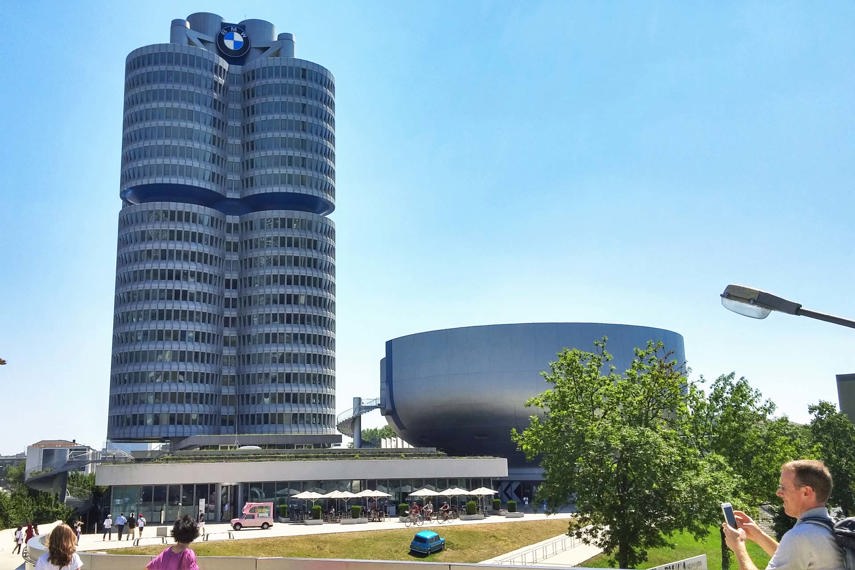 BMW Welt – BMW World
BMW Welt – BMW World
BMW Welt is well worth a visit, even for those with only a casual interest in cars (I couldn't quite convince my wife that it would be three hours well-spent for her, so I was on my own). Though the museum obviously exists to promote the brand, it provides a great insight into the company's history, first as a manufacturer of airplanes, and later motorcycles and cars. Separated from the museum by a pedestrian bridge over Lerchenauer Strasse is a massive showroom in which BMW encourages visitors to check out its current models, and attached to this is the vehicle delivery area, where buyers both European and otherwise can collect their new cars.
Munich’s historic old town is full of grand buildings like the "new" (built between 1867 and 1908), and “old” (built in the late 1300s) town halls, both of which border Marienplatz, the city's central square. The bustling Viktualienmarkt (food market) area is home to a number of venerable beer gardens and houses, including the storied Hofbrauhaus, where the beer is just as good as you’ve heard, and the sausages even better.
Wander north of the old town to get to the English Garden (Englischer Garten), an urban greenspace larger than New York City's Central Park. Bordered on the east by the River Isar and cut through with smaller canals, a couple of hours under a shady tree were the perfect respite from the heat wave much of Europe was experiencing while we were in Munich.
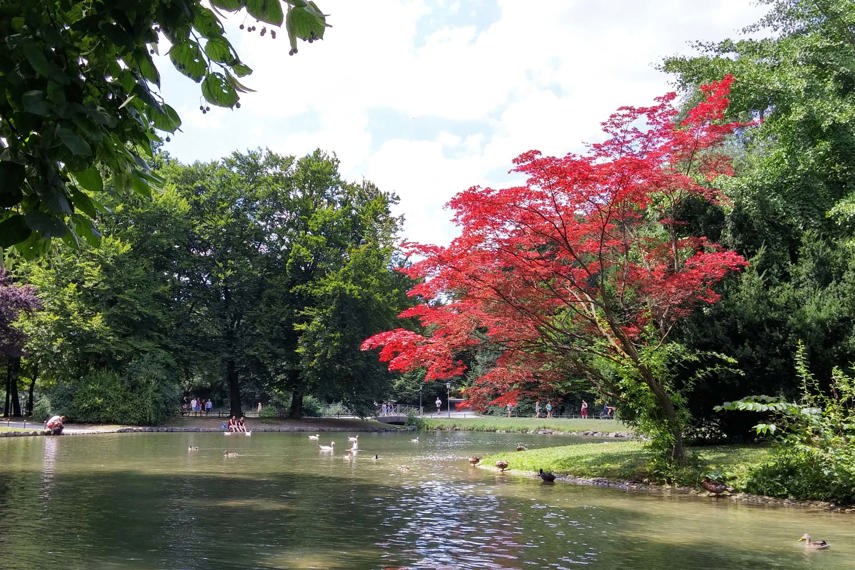 English Garden (Englischer Garten) in Munich
English Garden (Englischer Garten) in Munich
Western Europe is small and dense compared to Canada (in fact, all of it would fit inside Ontario) and it was part of our plan to take advantage of that, so one day we made the 90-minute drive from Munich to Salzburg, Austria, located just east of the border between the two countries.
Leave it to me to visit a fantastic European city and come away with one of my top memories being where we parked the car: the Altstadtgarage (old town garage) is built into a hollowed-out hill in the middle of town. This multi-level parking lot demonstrated the ingenuity with which European cities have incorporated the motor vehicle into spaces that weren't designed for them: my heart sank at the sight of a queue of cars waiting to get in, but digital signs at the entrance indicated when a spot (or spots) opened up, and where we'd expected an hour-long wait to park, we were out of the car and wandering Salzburg's beautiful old town after about 20 minutes.
Central Salzburg is an easy day of sightseeing: it's a small area, all cobblestone streets and quaint alleyways punctuated by lovely town squares perfect for people-watching. The only downside is that it's very touristy (think of old Quebec City and you'll get the idea), but it would have been silly not to come for a look, given how easy it was to get there.
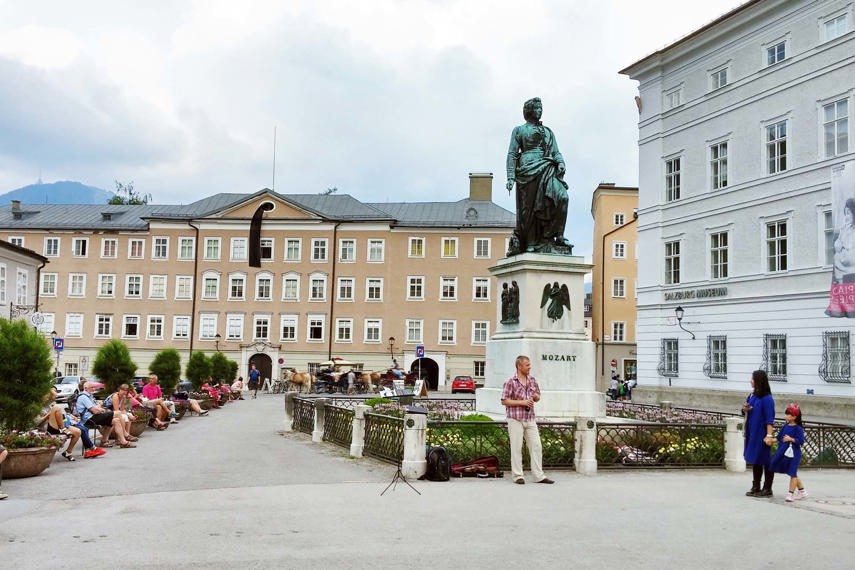 Mozartplatz in downtown Salzburg, Austria
Mozartplatz in downtown Salzburg, Austria
Salzburg is the birthplace of composer Wolfgang Amadeus Mozart, and naturally, there's a museum dedicated to his life and times in the house where he grew up. It's also home to the Salzburg Festival, a music and drama festival that was in full swing when we visited.
We strolled through the public grounds of St. Peter's church, whose catacombs are built into the side of the same hill that housed the garage where we'd parked the car.
The following morning we hit the road for another day trip, this time to Neuschwanstein Castle. Nestled against Germany's southern border with Austria, it's fittingly described as a fairy-tale castle that served as the inspiration for the Walt Disney logo.
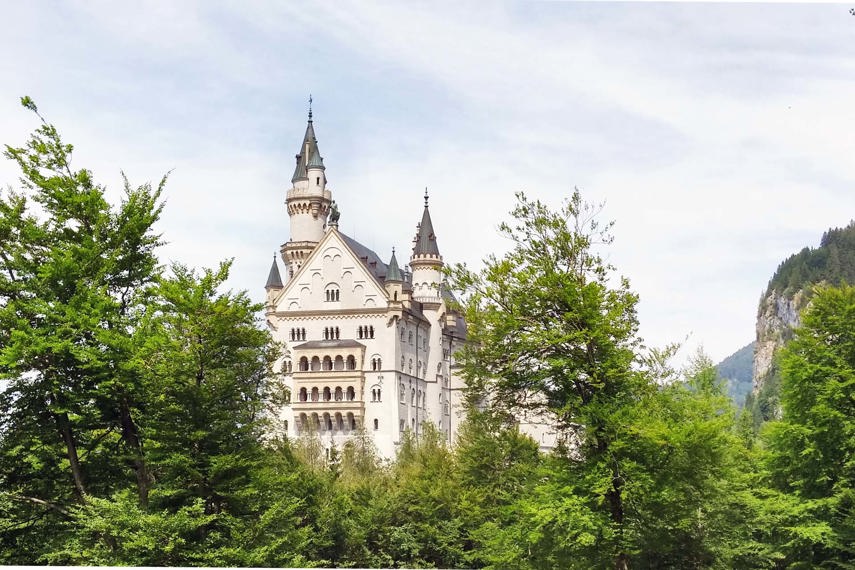 Neuschwanstein castle, inspiration for Disney's logo.
Neuschwanstein castle, inspiration for Disney's logo.
This time, we opted against the autobahn, and instead mapped out a route along the Romantisch Strasse (romantic road), a scenic two-lane highway that runs between Wurzburg (south-west of Frankfurt) and Fussen, about 360 km to the south, at the Austrian border.
On this day, I learned that unrestricted speed zones are not limited to the autobahn. They appear on secondary roads, too, and the locals aren't afraid to take advantage of them, as demonstrated by the half-dozen sports cars (four late-model Porsche 911s, a Ford GT in gorgeous orange-and-blue Gulf Oil livery, and a first-generation Dodge Viper) that blasted by us in one passing zone.
Later, something occurred to both of us as we rounded a long curve onto a particular stretch of highway: by all appearances, this bit of road could have been built perfectly straight, but instead, looked as if it was built on purpose to zig-zag back and forth, as if there had been a territorial spat between the owners of the farm fields on either side of it. No wonder Europeans like cars that can handle.
Our reviews talk about how the steering feel has been watered down in recent 3 Series models, but there's still enough life left in it to make the 328i GT a willing partner for taking a twisty road at 7/10ths. But just like in Munich's narrow Neuhausen streets, this car felt large on these secondary highways with no shoulder: put the right wheels off pavement and you're in the ditch, so we were grateful the 3er GT is as responsive at it is, even if we wished for the connected feel of past 3 Series.
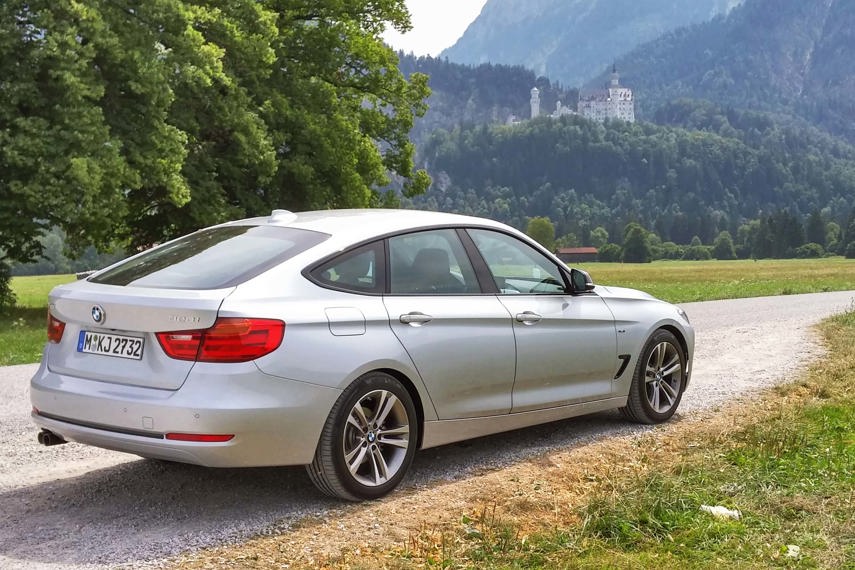 The 328i with Neuschwanstein castle in the background.
The 328i with Neuschwanstein castle in the background.
You get your first view of Neuschwanstein castle on the road into the small town of Hohenschwangau. In theory, you can tour the castle's interior; in practice, we had planned badly and weren't willing to wait four hours for the next available tour. Instead, we took the tiny bus that goes to the top of the hill (the other option is a 25 minute walk, which was not happening in near 40-degree heat and humidity) and enjoyed a close-up look at the castle's exterior, and the view over the town and fields below.
The next day, we made the long drive to Berlin, where we'd spend the second week of our vacation. This was the drive I had been looking forward to: roughly 600 km, nearly all of it on the autobahn.
Part of what makes Germany's highway traffic laws seem so progressive compared to those in North America is the use of dynamic speed limits. Electronic speed signs above the road can be changed to reflect weather or traffic conditions, and other stretches of unrestricted road have permanent limits in rainy weather.
As easy as the speed signs are to decipher, others are less obvious, like those indicating zones where heavy trucks are limited to the right lane, or passing is not permitted. Halfway to Berlin, we realized it would've been helpful to study up on German road signage, after being perplexed by signs that we later learned meant no overtaking, and no overtaking for heavy trucks.
Here's where the 328i GT really shone as a driver. If it felt big and unwieldy on urban streets and secondary highways, it seemed right at home on the Autobahn, where it took on the planted, solid feel you expect in a German car. I didn't push the speedo past 170 km/h, but this car would've been just fine to keep going, a nice discovery considering these are speeds we don't get to explore in Ontario (without risking your driver's license and car).
The little turbo four-cylinder acquitted itself nicely, too. I knew it was a good performer in a city setting, but its torque (258 lb-ft, just like in North American models) proved useful here too, for getting up to speed on some of the shortest on-ramp lanes I've ever seen, and for gaining speed for getting around slow trucks on uphill stretches. At the speeds we were doing, the eight-speed transmission had the engine spinning a bit north of 2,500 rpm.
We were pleased to learn that German highway rest stops were as civilized as those we found in our drive through France a decade ago, with sit-down buffet restaurants, and sparkling-clean bathrooms, for which we were more than willing to pay the roughly $1 admission.
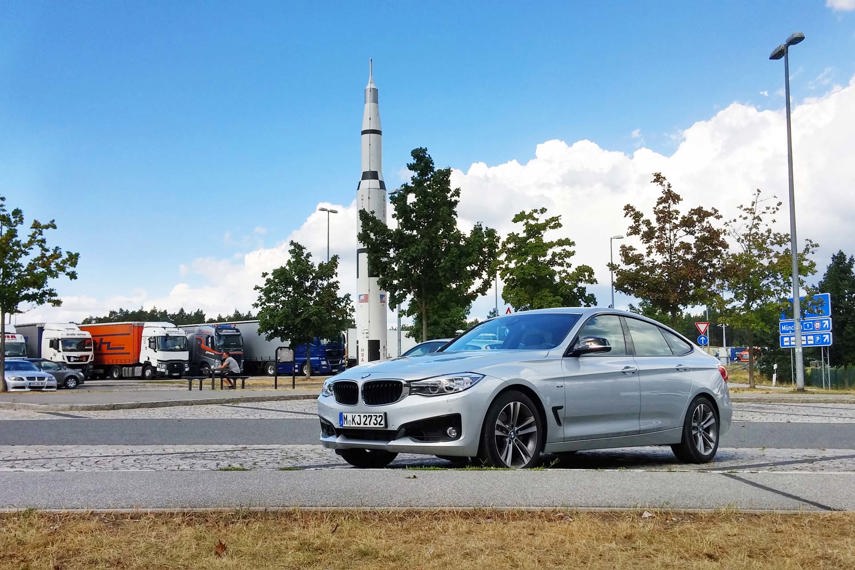 At Autobahn E51 rest stop
At Autobahn E51 rest stop
When we were planning this trip, I'd considered trying to secure a car that's not sold in North America, for a more immersive European experience. In the end, I'm glad I didn't: because this German GT was more or less exactly the same car BMW sells here, everything felt familiar, from the radio and climate controls, to the gauges, to the seats that made it easy to get comfortable and settle in for the long haul. It occurred to us that as we neared Berlin, we weren't as worn out as we thought we'd be after seven hours on the road, but it's possible we spoke too soon: we weren't actually in the city yet.
Indeed, the journey was uneventful until we got to Berlin. We let the car's navigation system (thoughtfully set to English by the folks at BMW Germany) guide us in from the highway, but a series of road closures due to construction and a protest march going right past our apartment added a stressful 20 minutes to the trip, which ended with an even more stressful interaction with a police officer manning a roadblock at the end of our street. We didn't speak enough German to explain why we wanted to turn onto the street, and he insisted he didn't speak English (yeah, right; nearly everyone speaks decent English in Berlin), and so we went back and forth until he finally told us, probably in exactly so many German words, to get lost and just go where we needed to go.
Our apartment was in a neighbourhood called Prenzlauer Berg, a former working-class area that survived Allied bombing remarkably unscathed and became popular with artistic types after the war ended. Since then, renovations to many of its pre-war apartment blocks have driven up property values and turned it into a sought-after residential area with loads of shops and restaurants.
Following our fraught arrival, we employed the magic of Google maps to see what was nearby, mainly with the goal of finding a place to get lunch the next day. As often happens, I got distracted by beer when I saw the word "kulturbrauerei" (which clearly meant something like 'culture brewery') on the map, thinking I'd found a local brewery. I was right, sort of: this former brewery, a short walk from our apartment, is now a community centre that houses, among other things, restaurants, a grocery store, a dance studio, a nightclub, and a museum. Most importantly, however, it hosts a fantastic weekly food truck rally every Sunday, where I got my first taste of currywurst. This is a local specialty that dates to around 1949, when street food purveyor Herta Heuwer concocted a curry-based sauce, dumped it all over a bratwurst and created what is now an essential part of Berlin's street food scene. This was a fancy version with a plum-based sauce over wild boar sausage, but I wasn't complaining about the lack of "authenticity".
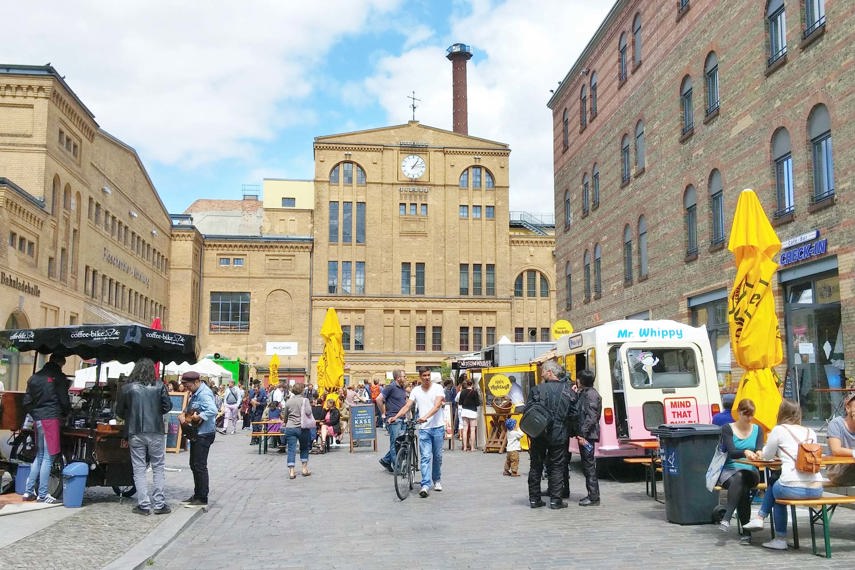 Kulturbrauerei – "Culture Brewery"
Kulturbrauerei – "Culture Brewery"
Later, we headed downtown for a look at one of Berlin's best-known landmarks, Brandenburg Gate. Though a beautiful piece of architecture in its own right, it might be best known for its prominence in the media's coverage of German reunification in 1989, when the gate seemed to appear in every image broadcast from the city. Walking under its arches, it was hard to imagine it hung with black curtains during U.S. President John F. Kennedy's visit in 1963, to prevent East and West Berliners (“Ossis” and “Wessis”) from being able to so much as see each other.
Berlin is a city steeped in history, and not all of it is happy. There are echoes of the Berlin Wall everywhere, plus memorials and museums dedicated to the former physical and political divide between East and West Germany. We spent hours at the Checkpoint Charlie Museum, located at the site of the checkpoint itself, which has been preserved as it looked before the wall came down. The museum opened the year after the wall was erected, suggesting that its founder, a human rights activist named Rainer Hildebrandt, understood very clearly the significance of what his country was going through.
Among other things, the museum's four levels include stories of people who escaped (and more who tried and failed) from East Germany, and a section dedicated to Raoul Wallenberg, the Swede who helped thousands of Jews escape Nazi-occupied Hungary during WWII.
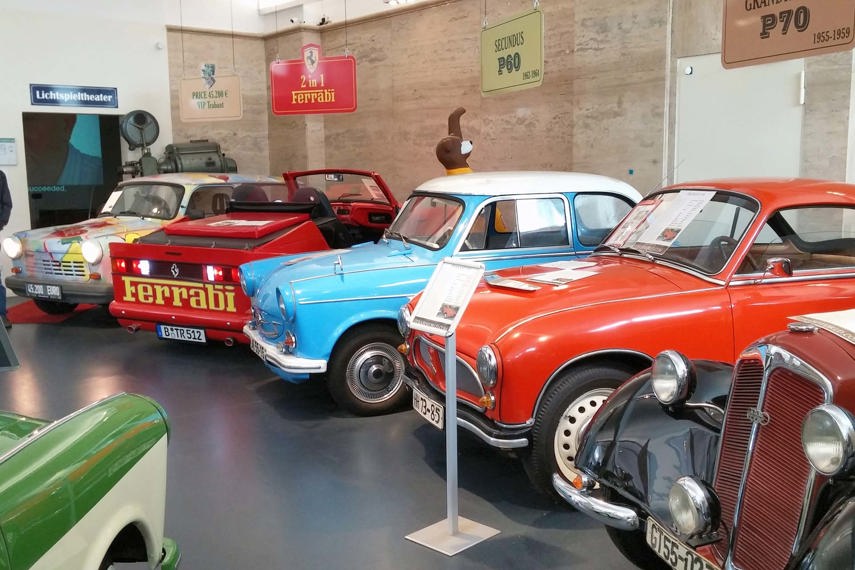 Berlin's Trabi Museum
Berlin's Trabi Museum
To lighten our mood, we headed down the block from Checkpoint Charlie to the Trabi Museum, a tiny space that pays tribute to the affordable car that put so many East Germans on wheels. While the car is considered a punch line by many, this plastic-bodied compact became a symbol of political upheaval in 1989 when thousands of Trabant owners headed for the west across the newly opened border. The museum includes an excellent (if lengthy) documentary film about the Trabi’s production team and the struggles they faced in getting the car built in the face of government interference.
A short subway ride north of the city centre is Bernauer Strasse, a street that followed the border between East and West Berlin. There you'll find the longest remaining in-place section of the wall, and an extensive and moving memorial to this once-divided city. While the street was located in West Berlin, houses on it faced East Berlin, and many attempted escape to the west by jumping out of back windows to be rescued by waiting fire brigades. The East German government quickly caught on, and evicted residents before bricking over windows and doors and later demolishing the buildings altogether. Other East Germans desperate to escape, and West Germans willing to help that cause, dug escape tunnels under Bernauer Strasse, and the wall itself.
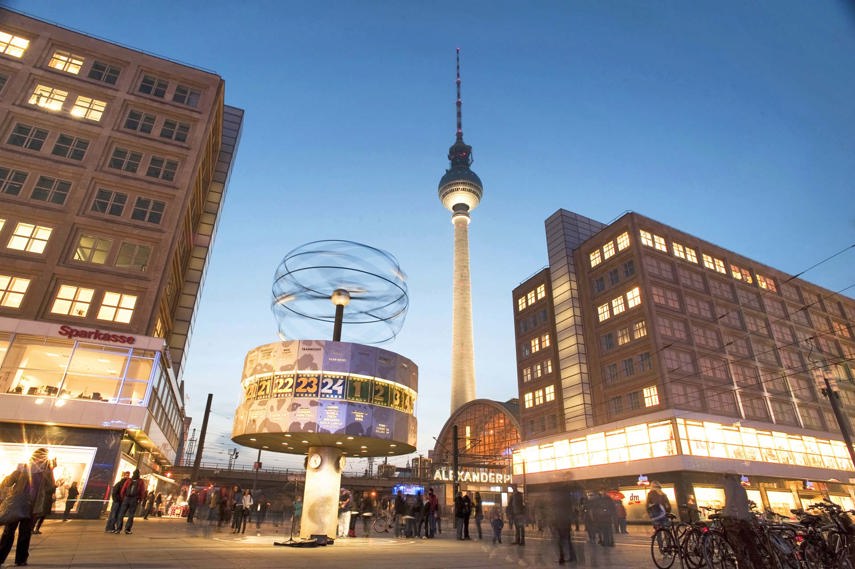 Alexanderplatz, with the Fernsehturm (TV Tower) in the background
Alexanderplatz, with the Fernsehturm (TV Tower) in the background
East Germany was constantly looking for ways to show off its might and wealth not only to the world, but to its own people, many of whom would have fled were it not for the Berlin Wall. In 1965, East Germany began work on the Fernsehturm (literally, TV tower) that has become one of the city's most recognizable landmarks. At its completion in 1969, it was (and remains) the tallest structure in Germany at 368 meters (1,207 feet) and offers a fantastic, 360-degree view of the city that was well worth the 20-euro (per person) admission, even to my wife and her fantastic fear of heights. At the base of the tower is Alexanderplatz, an uber-touristy shopping plaza whose central space and tram tracks were used to great effect in the movie The Bourne Supremacy.
Life in the former East Germany, formally known as the Deutsche Democratic Republic (DDR), was not as easy as its leaders wanted the rest of the world to think, a dichotomy captured elegantly by the DDR Museum. Designed to show what life was like on the eastern side of the wall, the museum highlights how poorly communism actually served the German citizens subjected to it. It’s notable that this was the only museum we had to wait in line to get into.
As I do in any foreign city I visit, I sought out the Canadian Embassy in Berlin (Botschaft von Kanada), located at Leipziger Platz, not far from Potsdamer Platz, significant for being a major target of Allied bombers during WWII; the extensive damage (it was not much more than a field of rubble) left little opportunity for restoration, and as a result, it's one of the few places in central Berlin where you'll find truly modern architecture like the Sony Center and the former Mercedes-Benz HQ.
Bringing to mind Berlin's significance in WWII are the remains of one of three massive "flak" towers (housing anti-aircraft gun installations) built by the Luftwaffe to help defend the city from Allied air attacks. Two are long gone, demolished after the war, but what's left of the third is an imposing, sobering sight that recalls a period of history I'm too young to fully comprehend. These days, the remaining exterior walls are used by recreational rock-climbers, a local historical group operates tours of the tower's interior, and the land around the tower is an urban park complete with a rose garden.
What impressed me most about Berlin is the city's unwillingness to forget the more tragic aspects of its history (knowing, perhaps, of the saying about being doomed to repeat the history one forgets). Rather than try to destroy or hide the Wall remnants and the flak tower, Berliners instead entwine the remains of history into the modern face of a unified Berlin.
I'm tempted to say I enjoyed Berlin more than Munich, but it's fairer to say I enjoyed both equally, but for different reasons. I may have come to Germany for the driving – and it was great – but I left feeling richer for having experienced so much more than that.
As a famous Austrian once said: I’ll be back.
